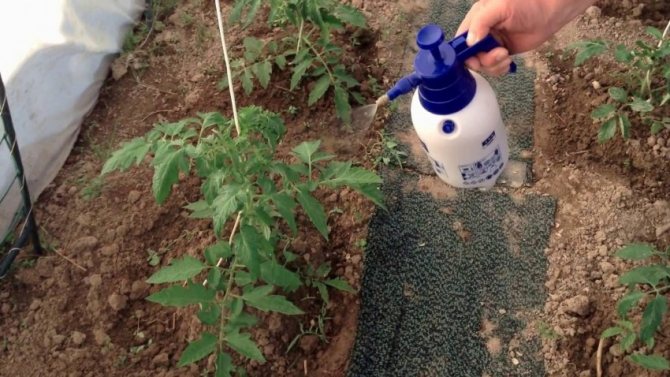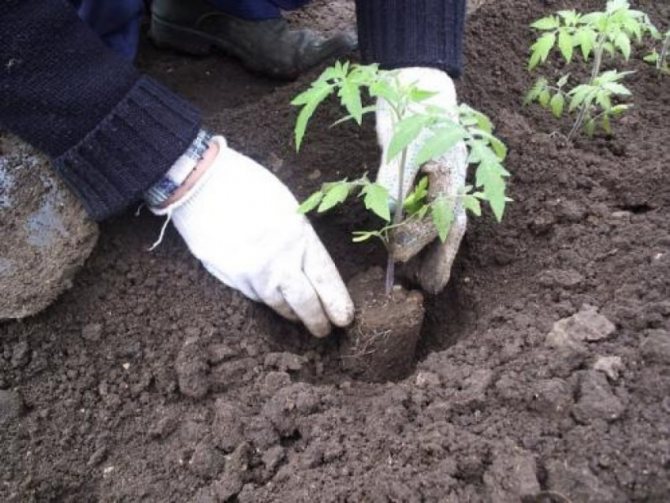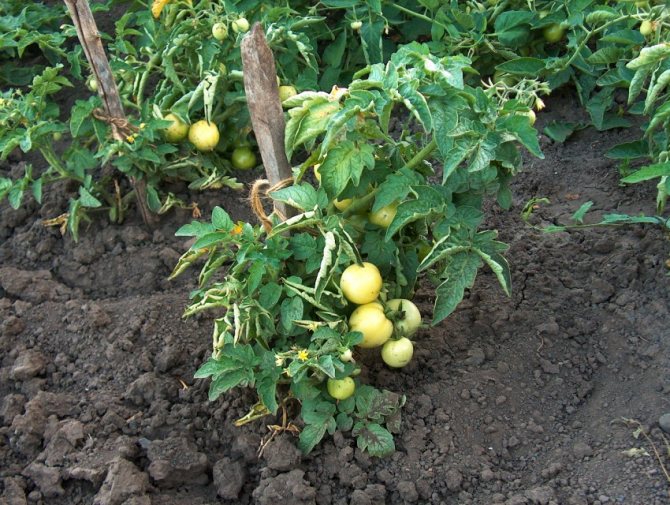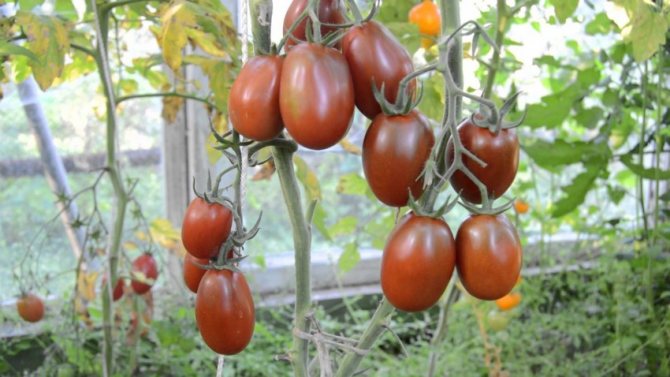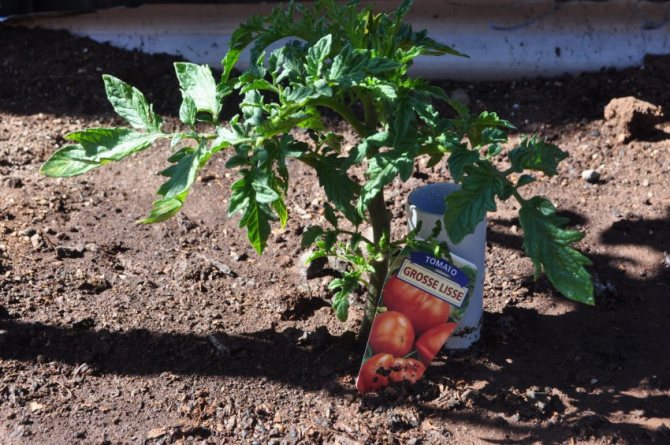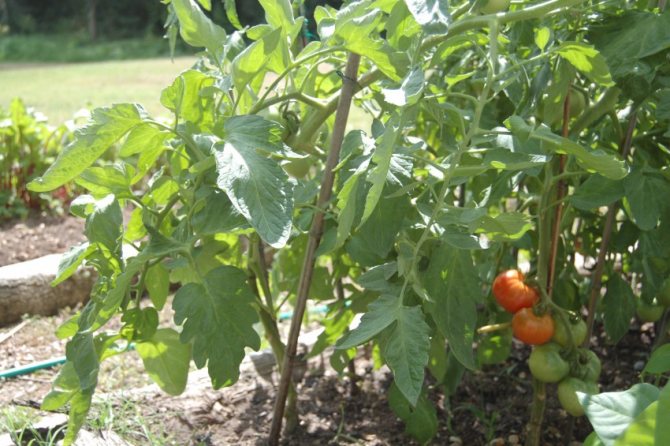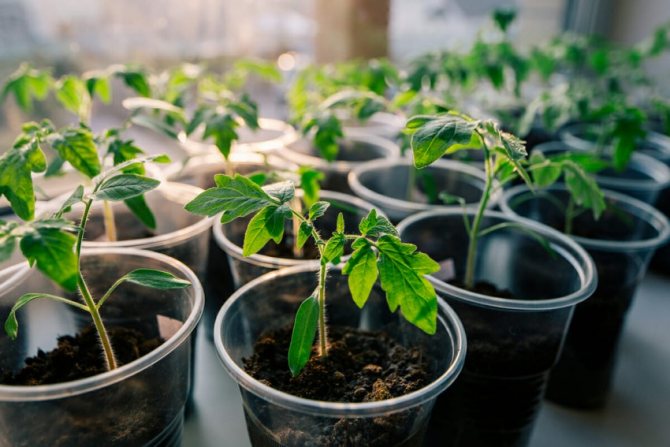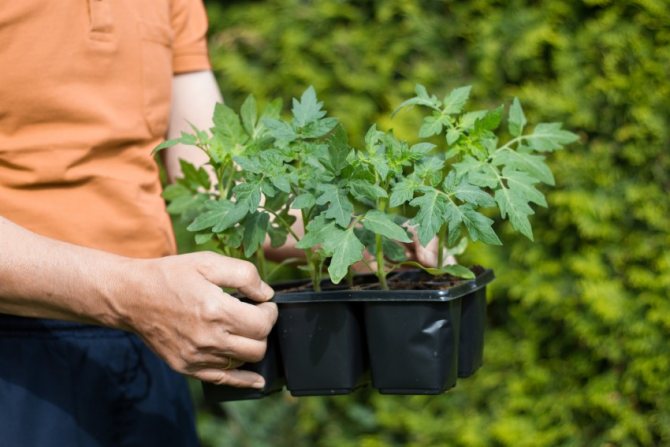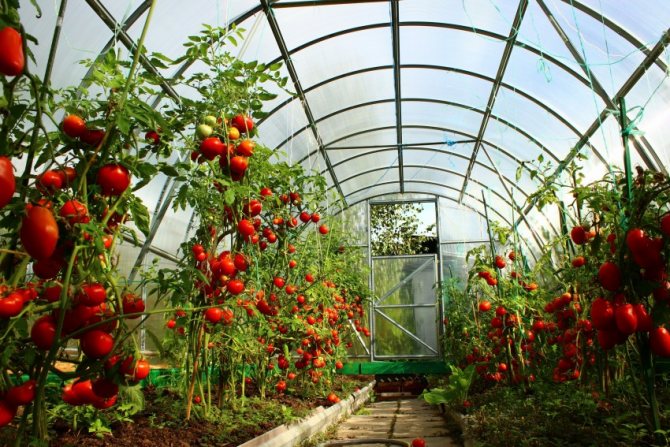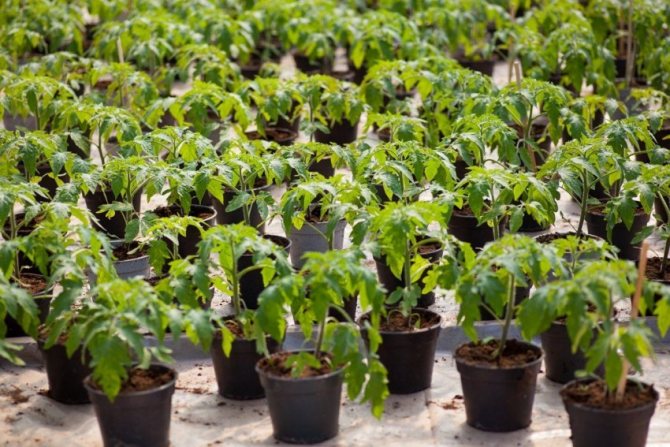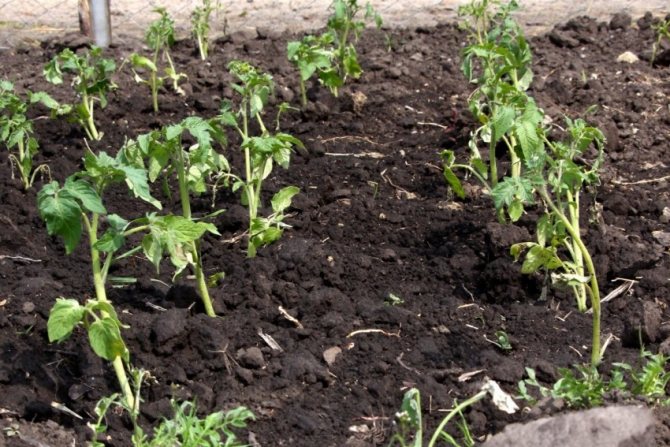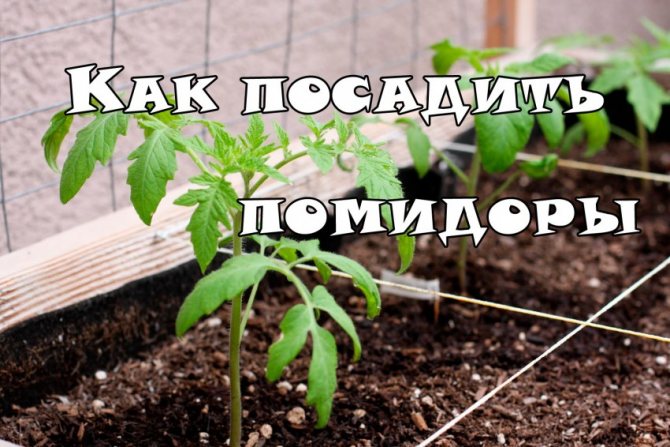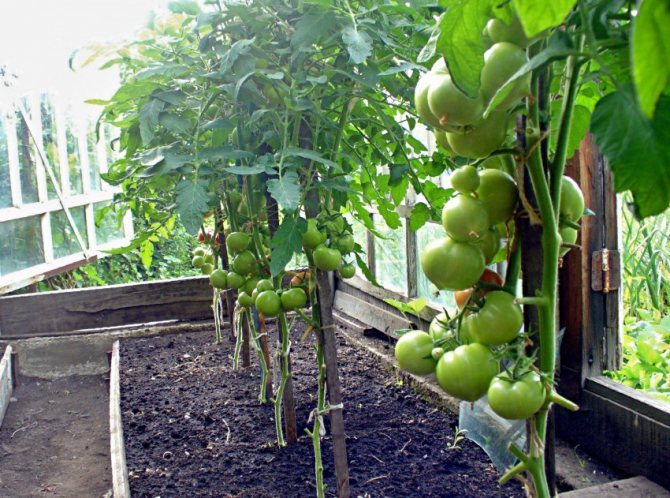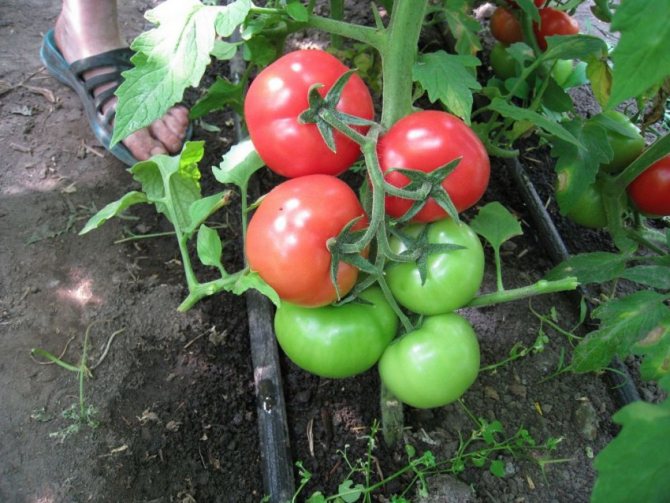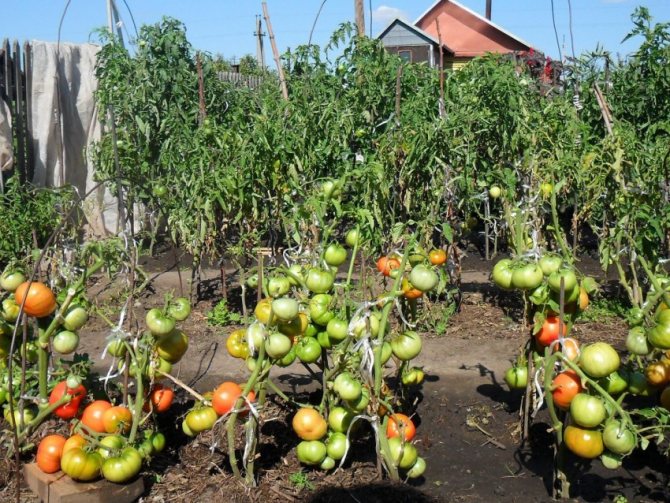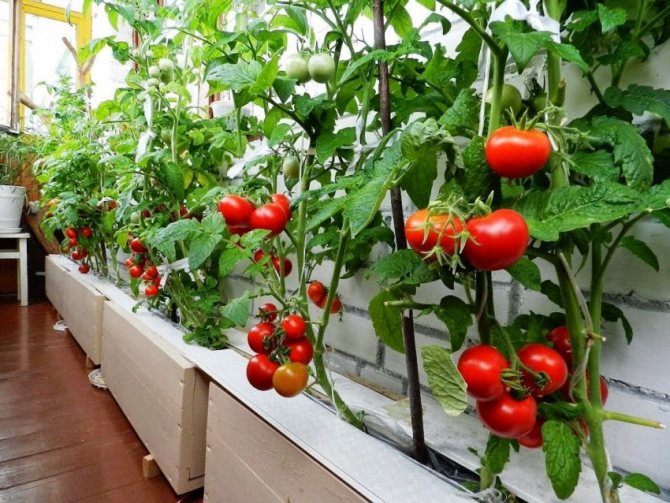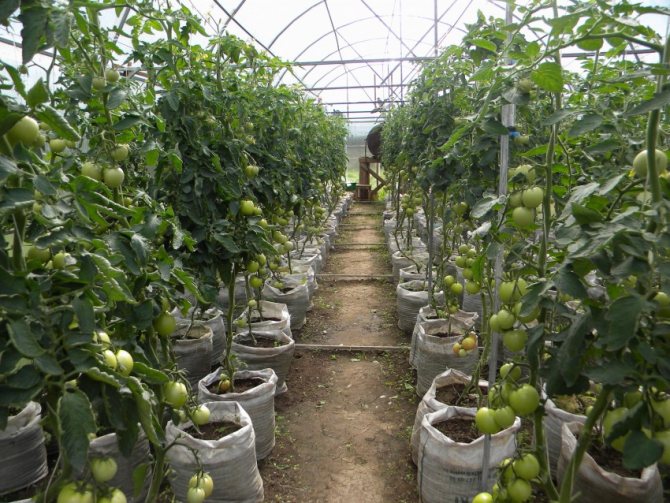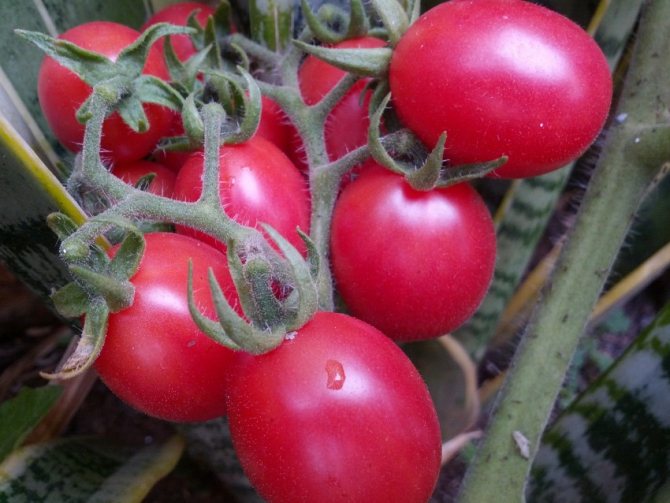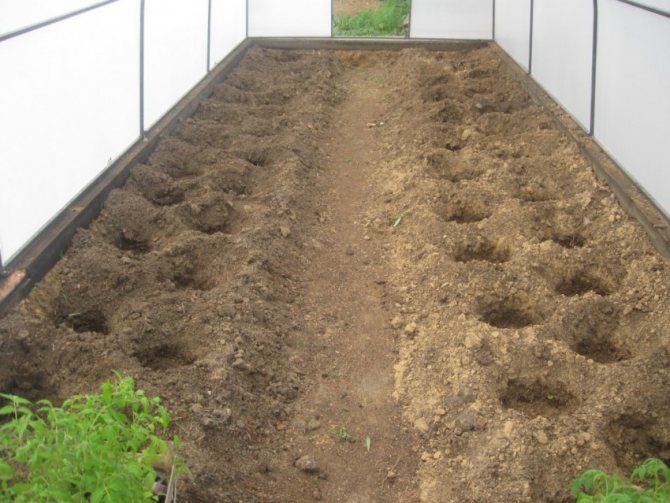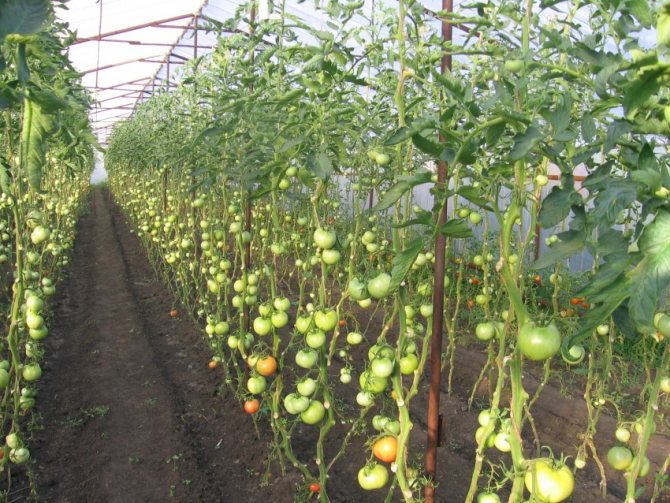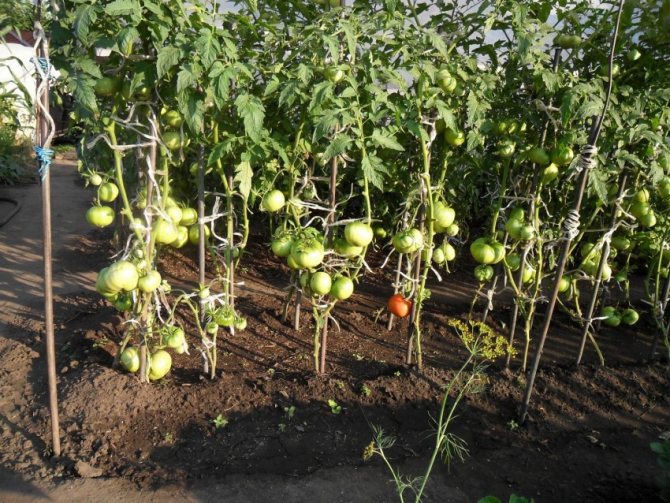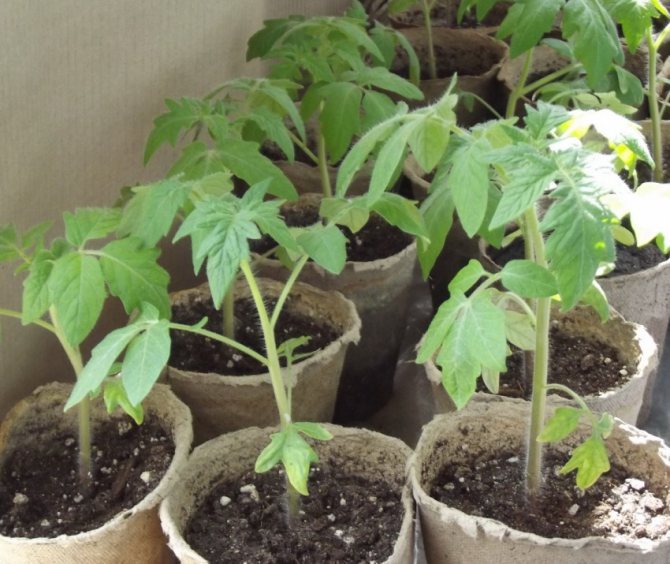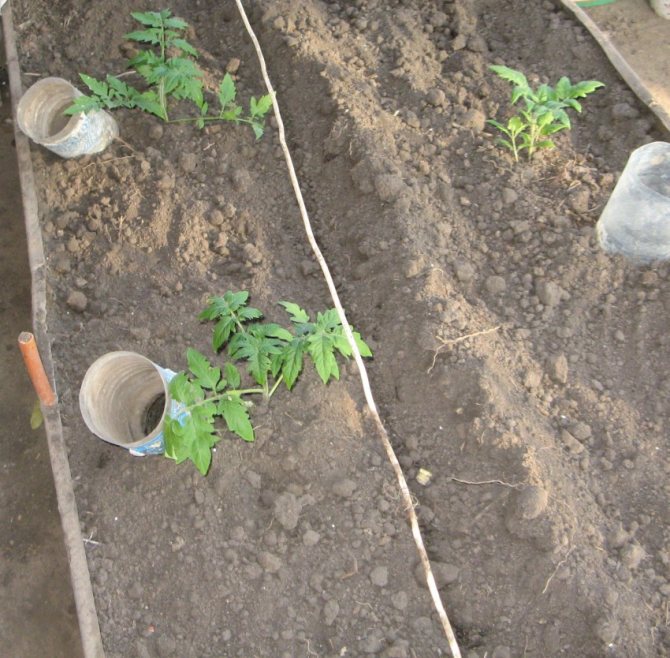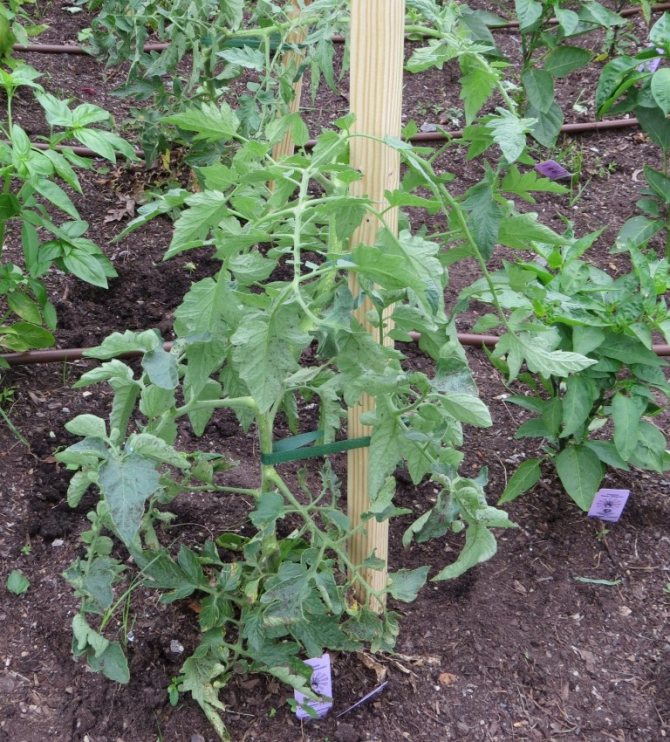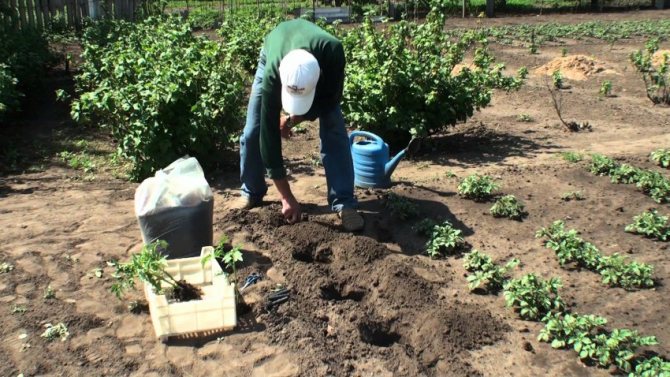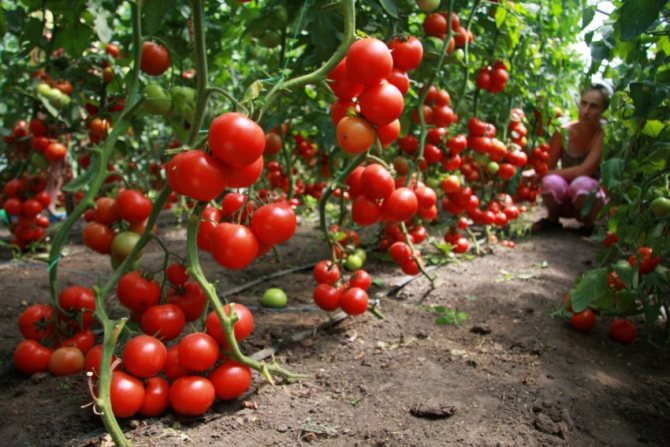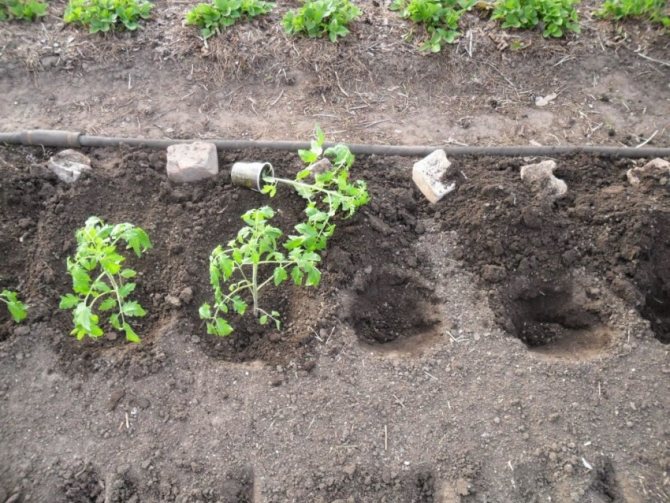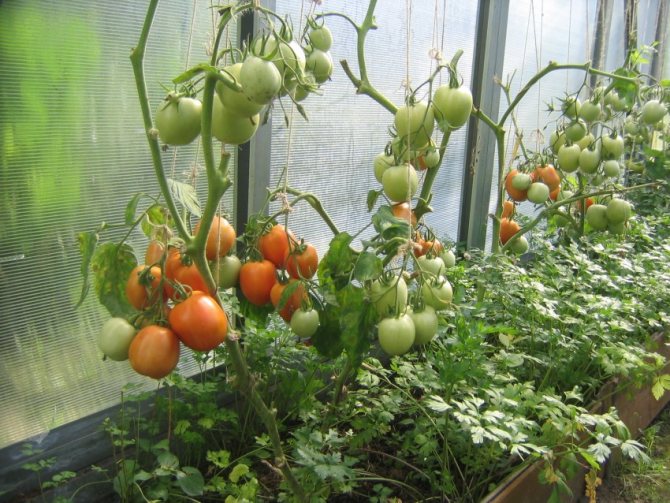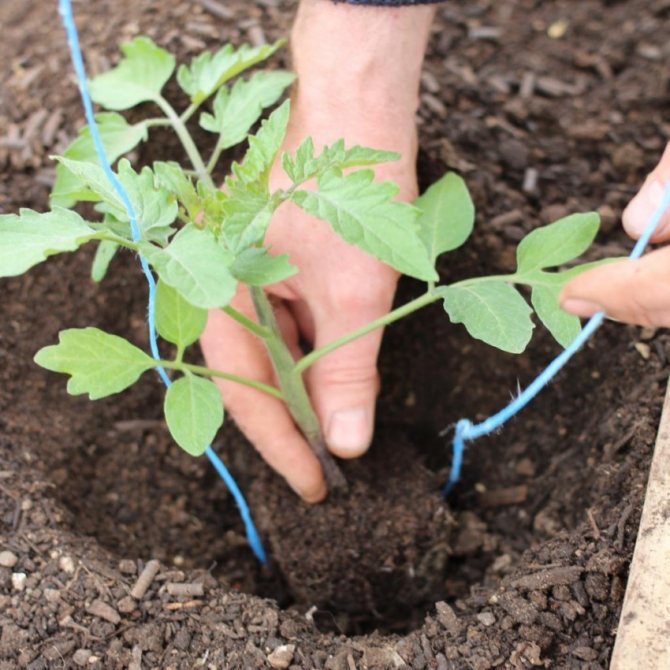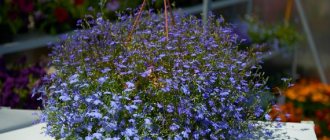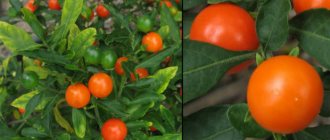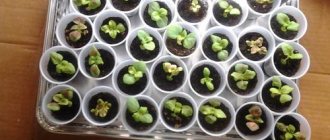Before you start growing a tomato in a greenhouse or in a suburban area, you need to take care of the presence of seedlings. Of course, you can buy ready-made tomato seedlings in the store, but it will be much more pleasant to grow them yourself. The first step towards growing seedlings will be to plant tomato seeds for seedlings. For many, this process may seem simple, but everything is much more complicated than it might seem. First you need to choose a suitable variety of tomatoes, find out the recommended sowing time, decide on the soil, the container for planting, and also carry out the preparatory procedure for tomato seeds. Only after that you can start taking action.
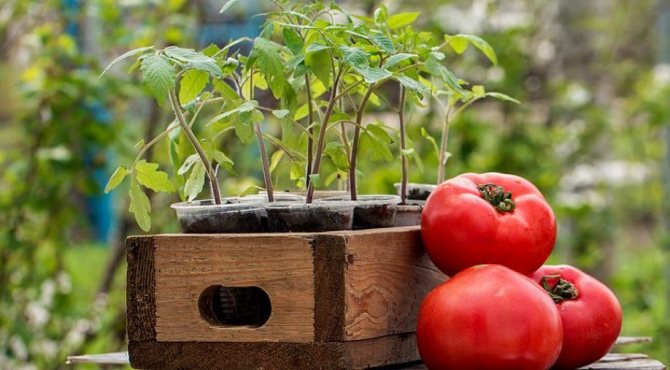
Tomato seedlings
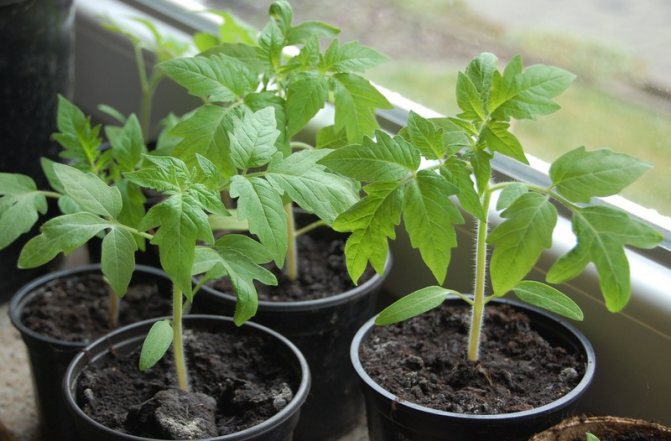

How to get quality tomato seedlings
Sowing rules
All gardeners grow tomatoes on their plots, as this is one of the main vegetables on our tables. However, in order to grow delicious vegetables, you must adhere to all the rules for sowing seeds and caring for seedlings.
- First you need to decide on the timing of sowing.
- Properly prepare the soil and disinfect it.
- Select the necessary containers for sowing seeds and their further picking.
- Process the seed and germinate it.
- Sow seeds to the required depth and send containers with crops to a warm place for germination.
Seedling care recommendations
For uniform growth of seedlings, you need to constantly change the position of the seed box, turning it relative to the window. This is done to prevent the stem from curving towards the light.
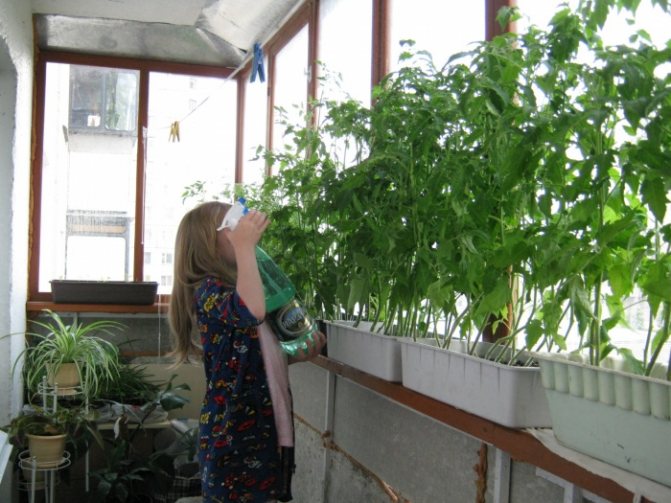

Tomato seedling care
The optimum temperature for germination is 24-28 degrees. This range should be kept until the emergence of shoots (as a rule, this happens already on the 5-7th day). If the temperature is below the recommended level, then the waiting time for seedlings may increase slightly. Particular attention should be paid to lighting, as it should not be too intense during this period.
After the emergence of shoots, it is advisable to slightly lower the temperature, but this does not apply to the illumination - it needs to be increased. To do this, you need to place the seed box in a cooler and lighter place with a temperature of more than 18 degrees. Such conditions must be observed for a week, after which the containers must be rearranged to a warm place. This time, the temperature should be between 18 and 22 degrees. This temperature regime must be observed until the first leaves appear.
Growing tomatoes in a greenhouse
Tomatoes can be used for all sorts of dishes, not just salads and canning. That is why any gardener considers it his duty to cultivate these plants. Growing tomatoes in a greenhouse is not an easy task, because this culture is capricious, demanding on growing conditions.
There is no need for abundant watering of tomato seedlings before picking. Watering should be done in moderation so that the soil does not dry out. For this purpose, you need to use warm water (with a temperature of at least 25 degrees). Otherwise, the plants may suffer from blackleg. Watering is desirable to carry out with settled water.
Sowing dates of tomatoes for seedlings
Typically, the seed package contains the recommended sowing dates for each variety. If this information is not available, then it is necessary to build on the ripening period of the tomatoes themselves.
- Early ripening varieties are sown 100-110 days before harvest. Of these, 1 week is allocated for seed germination.
- Medium ripening varieties are sown 120 days before ripe fruit appears.
- Late varieties are sown in 130-140 days.
Important! For seedlings, seeds are sown 45-60 days before transplanting seedlings to a permanent place.
By region
Planting times may vary depending on the region of cultivation and the characteristics of the selected variety.
- In the southern regions of Russia, sowing is carried out in the 3rd decade of February and throughout March.
- In the Moscow region and the middle lane, these procedures are carried out from the beginning of March to April 10.
- In the Urals and Siberia, the days from the end of March to the second decade of April are chosen for sowing.


Lunar calendar
The moon has a great influence on the development of any plant. Therefore, it is necessary to know favorable and unfavorable days for sowing, picking and planting plants. Then you can harvest a rich harvest of delicious vegetables. More details about this are written in our article: Lunar sowing calendar
Advice from Kizima and Ganichkina
Few people know how sowing tomato seedlings at home is done by Galina Kizima's method. The technology developed by her solves the problem of lack of space for growing seeds for seedlings.
According to her method, tomato seedlings are grown in a film, grows completely healthy and suitable for further cultivation.
Galina Kizima's method
According to her method, the seeds are planted not in boxes and pots, but in a dense plastic wrap (diaper). A small volume of soil is formed in it, which is enough for growing seedlings. As the plants grow, the film retains precious moisture.
The author's method has the following advantages:
- many tomato seedlings can be placed on the windowsill area;
- picking seedlings is easy and does not take much time, since for this you need to unfold the film and take out one plant at a time;
- this method requires a small amount of soil, since 100 tomato seedlings can be grown per 5 kg of substrate;
- in the process of growth, tomato plants are naturally protected from various diseases;
- through the film you can see how tomato seeds germinate.
Like any method, this one also has not only advantages, but also disadvantages. Here are the shortcomings noted by experts:
- tomato seedlings have little living space;
- high planting density worsens illumination, due to which the development of plants is slower.
Brief essence of the method
Planting tomatoes according to the method of Galina Kizima is performed in several ways with variations. Dry seeds and sprouts can be used. Planting seeds can be done in a substrate, or you can do without it.
A description of all methods deserves a separate article, and we will consider one of them, using germinated seeds. Here is the algorithm for the landing:
- seed preparation is carried out according to traditional technology, with calibration, disinfection and germination;
- then the seeds are placed in a damp cloth;
- a napkin with seeds for 3 days is placed under the bag;
- after this time, the first shoots loops will appear and you can start planting.
Next, you need to correctly carry out the planting process:
- a certain amount of soil is laid out on the corner of the film;
- germinated seeds are placed in it so that the cotyledons are located above the edge of the film, and the roots are covered with soil;
- the film is folded in the center and rolled into a roll;
- so that it does not unwind, it is fixed with an elastic band;
- the prepared rolls are placed in a pallet, and it, in turn, is placed in a lighted place;
- the planting date is recorded on the tape.
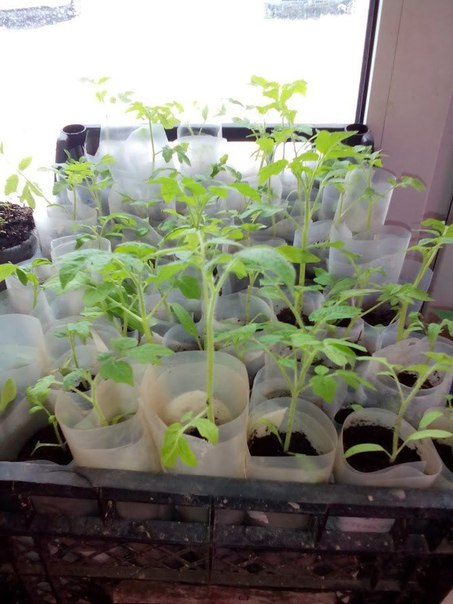

Oktyabrina Ganichkina's recommendations
Oktyabrina Ganichkina, known throughout the country, gives advice to gardeners on growing tomato seedlings at home.
| Her recommendations apply to all stages of cultivation. | |
| Sowing | Ganichkina believes that the use of home seedlings is preferable to the use of purchased seedlings. |
| Disinfection | For this procedure, it is advisable to use Epin or Energen, which not only kill pathogens, but also stimulate their development. The seeds must be soaked in such a solution for a day. Then they are put in a plastic bag and sent to the refrigerator for 3-4 hours. |
| By sowing dates | Sowing seeds at home is carried out depending on the variety. If low-growing varieties are used, then sowing is done in April. After 60 days, the seedlings are ready for planting. Late-ripening tomatoes are sown in March. Seedlings are ready for planting in 70 days. |
Landing rules
Ganichkina advises sowing seeds 3 cm deep in plastic cups, placing one seed in each container. So the plants will not shade each other and the growth of seedlings will not slow down. Covering the sown seeds with a film should be a must.
When growing tomato seedlings, it is very important to maintain a given temperature regime. During the day, the temperature should be +20 degrees and above, and at night it is prohibited to allow it to drop below +15 degrees.
It is even worse to allow the temperature to rise above +30 degrees, since, at the same time, the seedlings stop growing, the flowers are not formed, the roots take on an ugly shape. The yield from such plants falls at times.
In the video, Oktyabrina Ganichkina gives recommendations on how to sow tomatoes for seedlings at home:
Region selection
For each region, it is necessary to select the appropriate varieties. Some of them are shown in the table below.


Attention! In garden stores, amateur and professional packages of seeds are sold, which differ in the amount of seed.
Amateur packages are small and contain about 10 seeds. Sometimes you can find bags in which 15-20 seeds are packaged.
Professional packaging is much more. They can contain from 500 to 100 thousand tomato seeds.
Drop off location
Tomatoes are plants that love warmth. Choose a place that is sunny enough. Other plants should not shade it. The soil must be previously loosened. Tomatoes grow well in peat and black earth soils. Sandy ones require fertilization, although they let air through to the roots well. Loamy and clayey soils are not suitable at all.
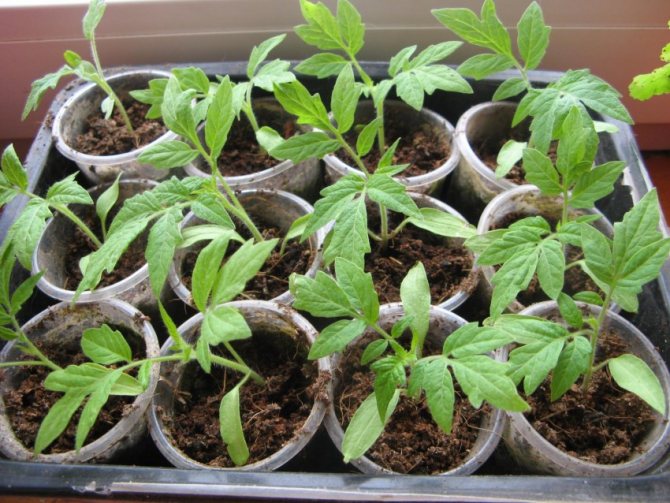

Of great importance are the crops that were previously planted before the tomato on this site. Tomatoes do not tolerate potatoes and do not grow well. Onions, carrots, turnips, cauliflower are good for them.
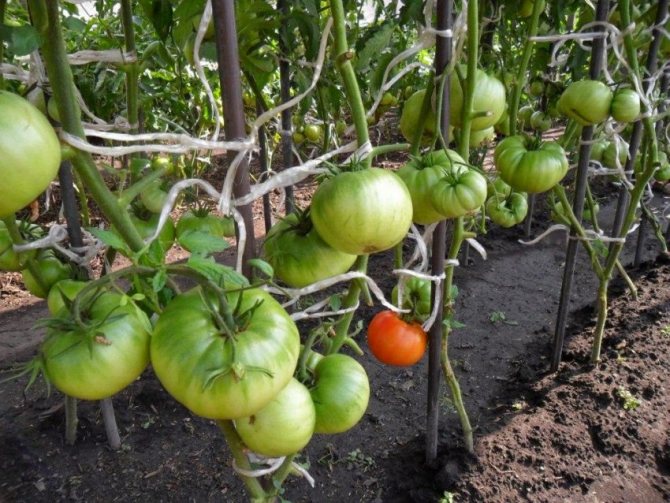

Planting the same plants on the site contributes to the accumulation of common parasites and diseases in the soil. Therefore, the plots must be changed annually.
Soil preparation
Seedlings will grow well and become strong and healthy if the seeds have been planted in fertile, nutritious soil. You can purchase it from your garden store or make your own using one of the following recipes.
Recipe 1
It is necessary to mix the following ingredients in equal proportions:
- Sand.
- Compost or humus.
- Garden land.
- Peat.
Further, to lower the acidity of the soil, 40 g of dolomite flour are added to the bucket of soil mixture. You can use wood ash instead of flour.
It is also recommended to add to the soil:
- 10 g of potassium fertilizer.
- 30 g superphosphate.
- 10 g of urea.
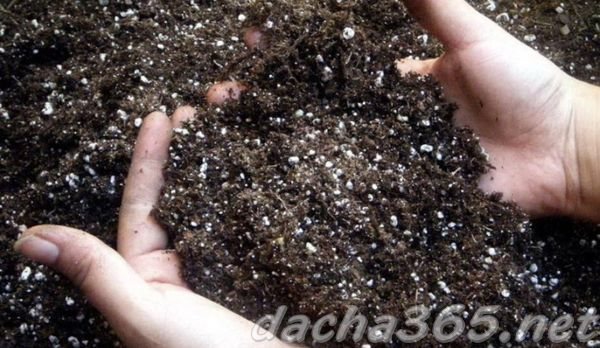

Instead of these elements, you can add a complex fertilizer containing potassium and phosphorus. In addition, this fertilizer contains a small amount of nitrogen.
Recipe 2
To prepare the soil according to the second recipe, you must mix:
- 2 parts humus or compost;
- 1 part of turf soil;
- 1 part of high-moor peat;
- 1 part coarse river sand or sphagnum moss.
1 glass of wood ash is added to a bucket of such a soil mixture.
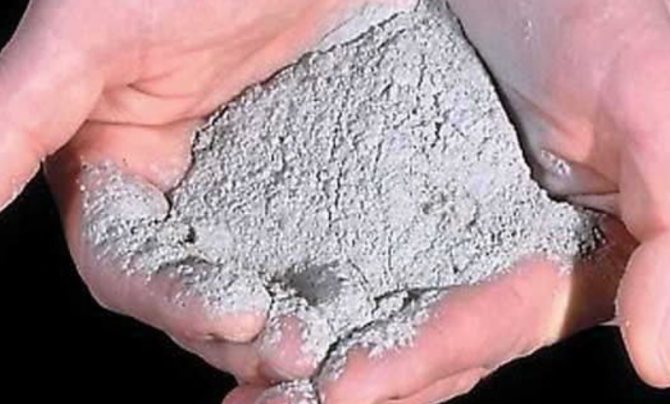

Advice! Instead of sand or moss, perlite can be used to loosen the soil.
Rules for choosing tomato varieties
The choice of tomato varieties must be approached responsibly. Vegetable varieties should be highly resistant to temperature extremes, grow well in dry and sultry weather, withstand cold snaps, and not lose useful properties during frosts.
In the beds, it is preferable to grow specially bred varieties that give a large yield, as well as hybrid varieties of tomatoes.
In order for tomato varieties to ripen before the first frost, early or mid-early tomatoes are usually transplanted into the beds.
Later varieties do not have the opportunity to ripen before the onset of the first cold weather. All fruits will differ in size, pulp condition, fruit color and shape, taste characteristics.
In open ground, determinant bushes of small size grow well, which do not require pinching and subsequent formation.
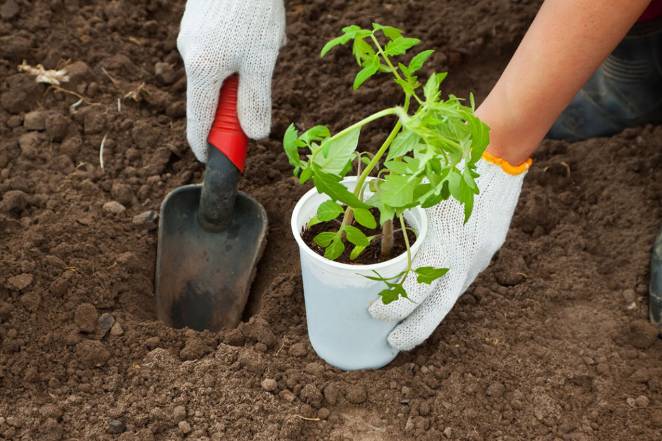

If they are planted in unprotected soil, then there is a chance that they will not branch and stretch. Indeterminate plants look more compact, they require fastening, and there is a need to fix not only the stems, but also the branches with heavy hanging fruits.
Seedling containers
For growing seedlings, various containers are used, depending on the wishes and capabilities of the gardener. The main thing is that they have drainage holes for water flow. If there are no such holes, you can make them yourself or pour a drainage layer of expanded clay or other natural materials on the bottom. For growing tomato seedlings, you can use:
- Wooden or plastic boxes. They remain relevant in our time, as they are easy to use. However, further plant picking is required.
Pros: You can transport seedlings in them. Such boxes are inexpensive and can be used for a long time, moreover, they can be made by hand.
Cons: such boxes with soil are very heavy and there is a possibility of damage to the root system during transplanting seedlings.
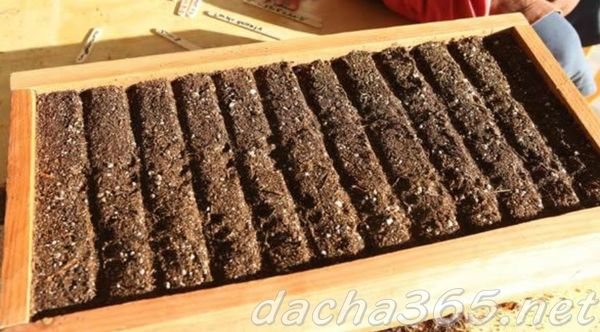

- Plastic cassettes. These are cells of the same size stapled together. They can be of different widths and lengths. Most often, a sump for collecting water must be bought separately or come up with improvised means.
Pros: They are lightweight, easy to use, and have drainage holes. You can cut them off with scissors. Seedlings from such cassettes are easily removed
Cons: short service life, difficulties in transportation.
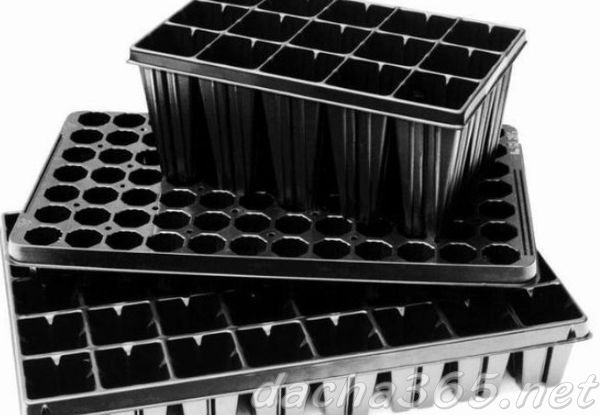

- Peat cups. Very popular with gardeners. Made from environmentally friendly materials. Experts recommend using peat cups when picking. Pros: environmental friendliness, durability. No need to replant plants, peat dissolves in the soil, acting as an additional fertilizer for plants.
Cons: moisture evaporates quickly, so you need to water more often.
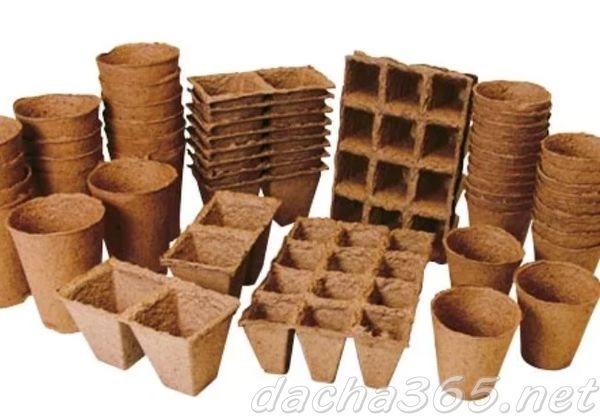

- Peat tablets. This is compressed peat in a net with added nutrients. Soak in water before use for swelling.
Pros: easy to use, quickly dissolve in the soil, stimulates the development of the root system.
Cons: expensive, an additional pallet is needed, moisture evaporates quickly.
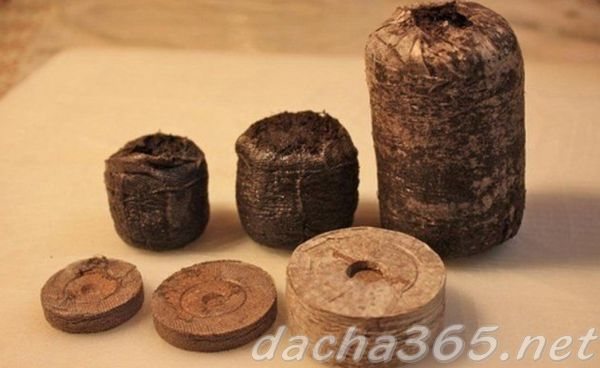

- Plastic cups. They are most often used by gardeners for sowing tomato seeds for seedlings... Use cups of 100 and 200 ml for sowing seeds and 500 ml for picking them.
Pros: easy to use, the seedling can be easily removed from the cup along with a lump of earth during transplantation, long service life.
Cons: no drainage holes, additional pallet needed, transportation difficulties.
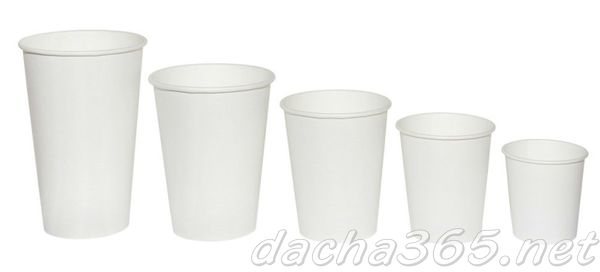

What soil is suitable for seedlings
Tomato seedlings are not very picky about the soil, but in any case it should be light, water-absorbing, and always breathable. The ideal composition is a mixture of equal amounts of turf, peat and humus. If you add a handful of ash to this mixture, then perhaps the seedlings will not need additional feeding. However, self-prepared soil should be disinfected. This is easy to do: a week before sowing the seeds, the soil is generously watered with a warm pink solution of potassium permanganate.
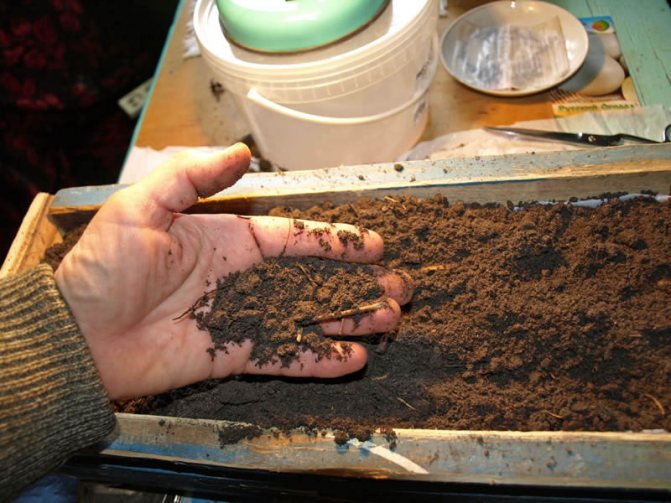

Any soil must be sieved well, removing large and foreign objects
Anyone who grows a small amount of seedlings buys a ready-made potting mix in the store. Most often, it contains everything you need and does not even require disinfection. Just don't buy the cheapest options. It is also desirable that the soil be designed specifically for growing tomato seedlings (universal is also suitable, for vegetable seedlings, but it is better not to take for flowers).
Tomato seed preparation
The seeds must be prepared before planting. For this, certain procedures are carried out.
Sorting
Only good quality seeds should be used for the ride. To choose good ones, they are kept for 15 minutes in a salt solution (for 1 liter of 30 g of salt). Those seeds that floated up are empty, they must be thrown away. For sowing, those that have appeared on the day are suitable.
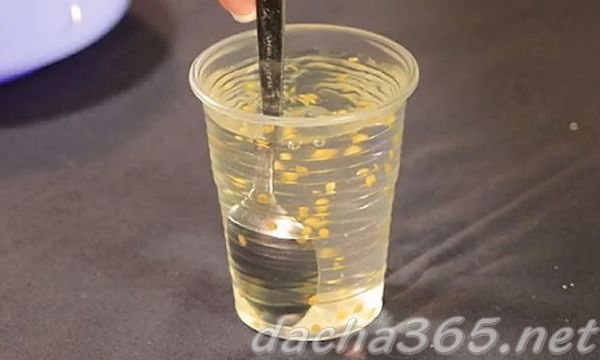

Decontamination
Disinfection of tomato seeds is carried out by one of the proposed solutions:
- In 100 ml of water, 1 g of potassium permanganate is diluted.
- Phytospopin (1.5 g of the drug per 100 ml of water), soak the seeds for 2 hours.
- Dissolve 10 g of baking soda in 1 liter of water. Leave the seeds in the baking soda solution for 12-24 hours.
- Aloe juice is diluted with water in a ratio of 1: 1. The seeds are kept in the solution for 24 hours.
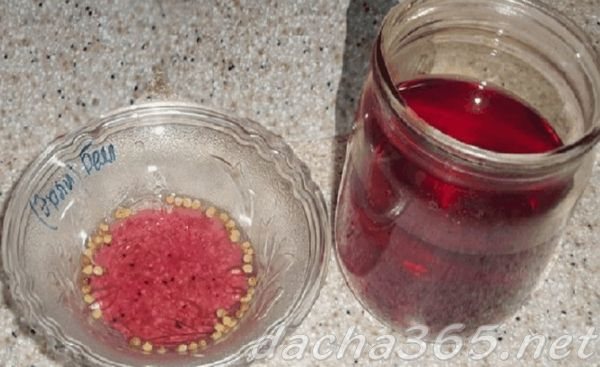

Boric acid solution (optional)
Essential for nourishing seeds and destroying pathogenic bacteria. In 1 liter of water, 1 g of a substance is diluted. The seeds can withstand a day.
Growth stimulant
Gumat sodium, Epin, Gumat potassium or Epin will do. It is bred in melt water and treated with seeds for 12 hours.
Epin-Extra or Zircon: Dissolve 1-2 drops of the product in 100 ml of water. Seeds in gauze are immersed in a solution of + 20C for 12-20 hours.
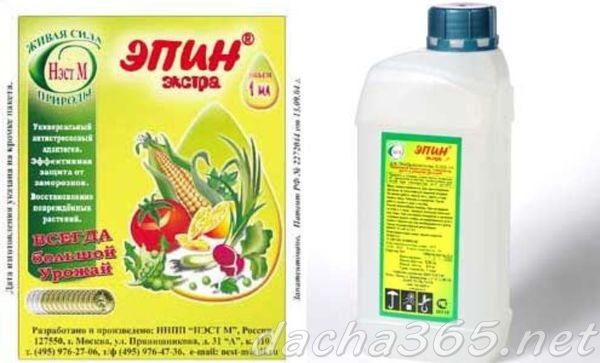

Stuffing (optional)
Leave the raw seeds in the refrigerator for 24 hours. Such treatment makes seedlings strong and resistant to unfavorable growing conditions.
Passing
After the refrigerator, the seed is laid out between layers of damp cloth on a saucer. The cloth should be regularly moistened with warm water. The seeds will hatch in 4-5 days, then they can be sown.
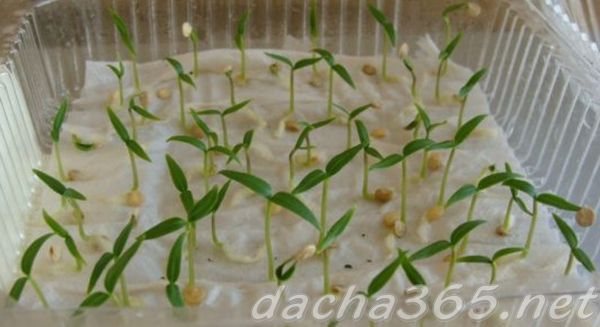

Tomato varieties that grow well in open beds
1. The Black Prince. This variety is very productive, developed by Russian breeders. Fruits are red-brown, large. The taste of tomatoes is rich and sweet. The variety has a fairly good resistance to dangerous diseases.
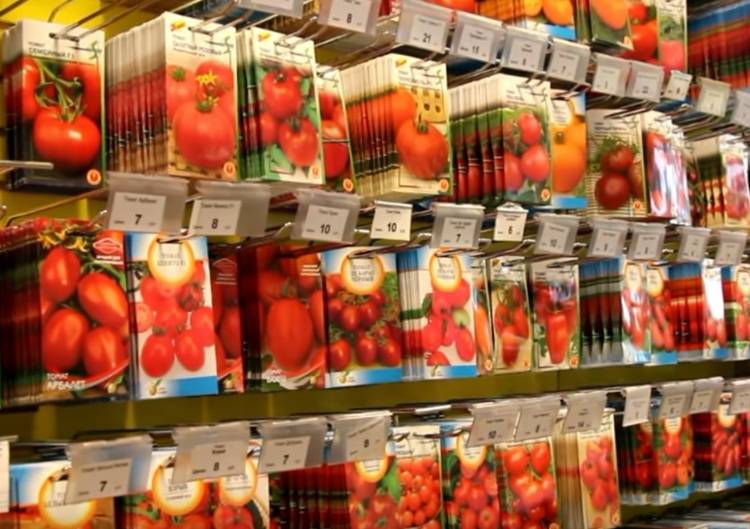

2. Korneevsky Red and Korneevsky Pink. Large fruits with a light sweetish taste, excellent resistance to diseases, need a garter, and further formation of a seedling.
3. Altai. It can be of different types - red, pink, honey-yellow fruits, resistant to cold, not demanding in care. The bushes are compact and neat, give a high yield.
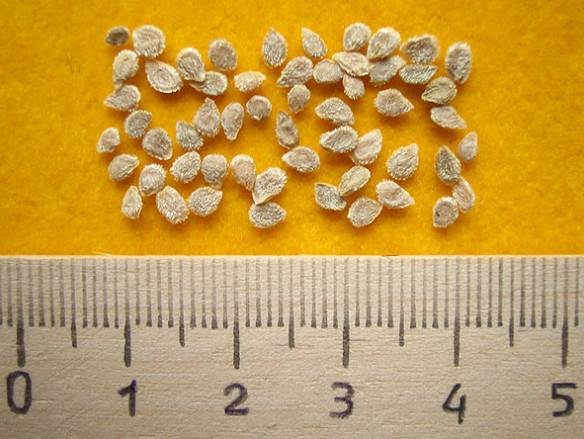

4. Bells of Russia. The variety grows well in all weather conditions. The fruits are elongated, perfect for canning.
5. Bullfinch. Quite an unpretentious tomato variety, suitable for salting or cutting into a salad.
6. Martha. It has a high yield, tolerates dry weather well, bears fruit until frost, has excellent keeping quality.
How to sow tomatoes for seedlings correctly
In the classic version, the treated seeds are sown with subsequent picking into a common box. However, there are other options, for example, without the use of primer at the initial stage. The main thing is to be able to grow strong seedlings, which will quickly take root after transplantation.
How deep to sow seeds
Tomato seeds are buried 1–1.5 cm into the ground or peat.At a deeper depth, seedlings will appear later. If the depth is insufficient, the seeds can become bare even when watering from a spray bottle.
Seeds of tall varieties should be sown more deeply, and dwarf varieties should be buried at least 8 mm. Much also depends on the density of the soil: it is easier for a sprout to break through sand than through clay.
Watch the video! Sowing tomato seeds for seedlings
What container to plant
Traditionally, tomato seeds are first sown in a small common box or box, and 10-12 days after germination, seedlings are planted in separate cups or in a larger box. This is due to the fact that tomato seedlings benefit from a classic pick, in the process of which young plants are not only transplanted to a new place, but also pinched at the central root, as a result of which the roots branch better, and the whole bush becomes stronger and more enduring.
For primary sowing, it makes no sense to keep special boxes in the house, which take up space all year round. It can even be a plastic cake box, or better, a rectangular cardboard juice or milk box. You just need to make several small holes in one of the large sides to drain excess irrigation water. The height of the soil layer for sowing seeds should be at least 5 cm. Only one variety can be sown in each small box, and this is also convenient.
For the subsequent picking, other dwellings must be prepared in advance. Anyone who grows a small amount of seedlings dives the seedlings directly into individual pots or cups. For undersized varieties, their volume should be from 250 ml, and for the most gigantic varieties, up to a liter. The best solution is, of course, disposable peat pots. But if it is supposed to grow hundreds or more bushes, there will not be enough space for such a number of pots in the apartment, and the seedlings dive into a larger common box, with a height of at least 8 cm.
Video: sowing tomatoes in a total container
Sowing methods
To the general box
Pomidopes are good at picking. After it, the root system intensively develops in the seedlings. Therefore, seeds can be sown with a high density in boxes for seedlings, and after 14 days, a pick is carried out, increasing their space.
Step-by-step instruction:
- Furrows are made in the ground with a depth of 1.5 cm at a distance of 4–5 cm from each other.
- The treated seeds are spread in the furrows at intervals of 2.5–3 cm.
- Sprinkle the seeds with soil, spread the snow on top with a layer of 3-4 cm. If there is no snow anymore, the crops are carefully watered from a spray bottle so as not to expose the seeds.
- The containers are covered with glass or foil and left in a warm place with a temperature of 23-25 degrees.
After 4-7 days, the seeds should germinate. The film is removed and the boxes are transferred to a cool windowsill with good lighting. For several days it is necessary to maintain the temperature during the day at 16–18 ° C, and at 14–17 degrees at night. After that, the degrees are gradually raised to room temperature.
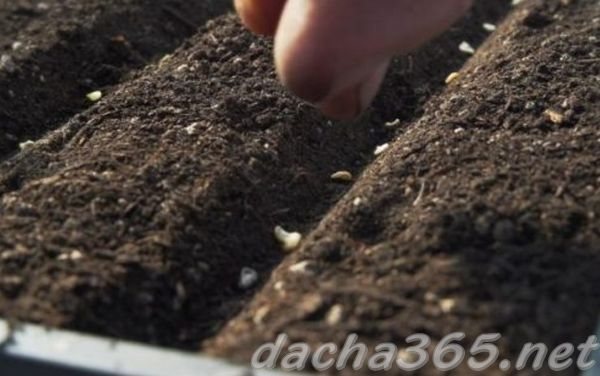

Picking
Within 10 days, the first true leaves will begin to form on the seedlings. At this time, or after another couple of days, the seedlings dive into separate pots or a box of larger volume. Seedlings are planted in a box according to a 10x7 cm scheme.
A pick is desirable for tomato seedlings.
- Seedlings must be well watered before the procedure.
- In new containers, holes are made in which the dug seedlings are placed.
- It is better to dig it out with a clod of earth - good, however, without it, the seedlings will take root well in a new place.
- The central root of each seedling is pinched.
- The seedlings are buried so that the cotyledon leaves are above the soil surface.
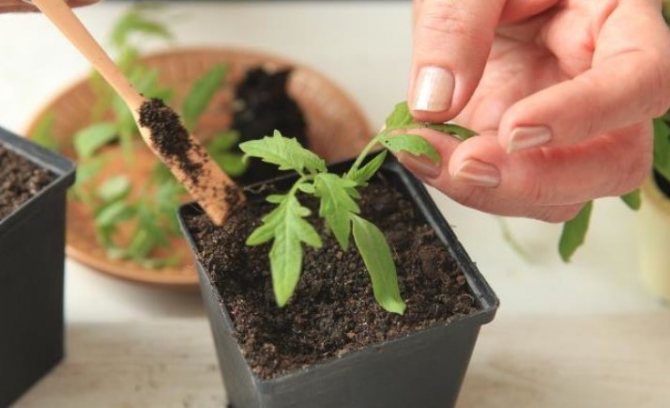

In peat pots
Peat pots are convenient for growing seedlings that do not tolerate picking well, but sometimes they are also used for tomatoes. Some gardeners immediately sow tomato seeds in them. Further, the roots easily germinate through the walls of the peat and the seedlings, together with the pot, are planted in a permanent place.
It is better not to touch the pots once again, as peat quickly gets wet from watering. They must be put in a box before disembarking in the garden.
For tomatoes, medium-sized pots are suitable. Seeds are sown in the same way as in the box. In this case, it is very important to observe the temperature regime. Seedlings stretched out in a box can be deepened to the cotyledons when diving. But it will be a pity to transplant it from a peat pot. Seedlings in peat pots should be watered more often, as the water evaporates quickly.


In peat tablets
Peat tablets are suitable for growing seedlings without additional fertilization. It is unprofitable to use tablets for tomatoes, since they are expensive, but convenient. It is best to choose washers with a diameter of 7 cm.
The tablets are laid out in a deep tray and water is gradually poured. They will swell and increase 5-6 times. On one side of the tablet there is a recess for the seed. It should look up. The seed is laid out in a depression and lightly pressed into the peat. Then everything is watered, covered with a film until shoots appear and left in a warm room. For watering, water is poured into a pan.
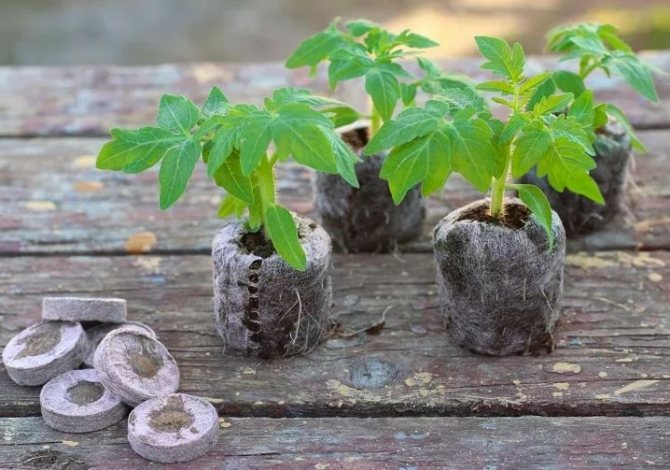

In a diaper (in a snail)
For growing seedlings in a snail or in a diaper, medical or household disposable diapers are used. A thin layer of soil is poured on them and seeds are spread close to the edge. Then everything is twisted, placed vertically upwards with seeds, covered with a bag and waited for germination. Seedlings dive when real leaves appear.
We are talking about the method of growing seedlings in "diapers", which was first proposed by V. N. Kovaleva.
Polyethylene is cut into strips 10 cm wide, and the length is at the discretion. A layer of toilet paper of the same length is spread over the film.
The paper is moistened with a solution of aloe juice or growth stimulant.
Seeds are laid out on paper with an interval of 3-4 cm. Cover with a second layer of paper on top, spray and cover with a diaper.
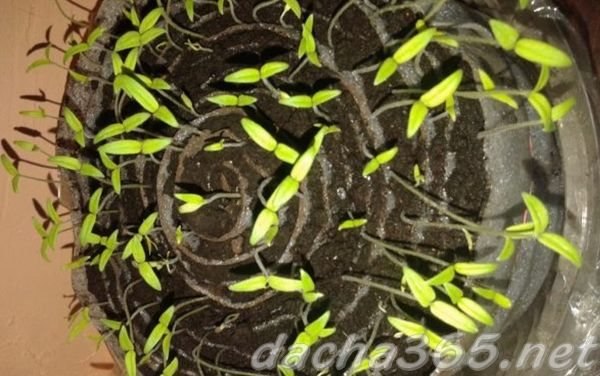

Advice! Between the diapers, you can put a layer of soil and spread the seeds on it.
Everything is rolled up and left in a plastic cup. Several packages can be put in 1 cup.
1-1.5 cm of water is poured into the container to moisten the seeds.
Cover the top with a foil with holes for ventilation and leave in a warm place.
Such seedlings are easy to dive. To do this, the bundle is unrolled, the roots of the seedlings are pinched by 1-2 cm and the seedlings are planted in a new place. The paper does not need to be torn off, it dissolves well in the soil.
On toilet paper
Some gardeners use toilet paper instead of substrate. In the case of tomatoes, after a while, a pick will be needed in a container with soil. You can use toilet paper like this:
- Cut the large plastic bottle lengthwise. Put several layers of paper on the bottom of the half.
- Soaked tomato seeds are spread between the layers at intervals of 2-3 cm.
- The paper is moistened with water, then the bottle is wrapped with cling film and left in a warm place.
- When the shoots appear, the temperature is lowered, but the film is not removed.
- After 3-4 days, the temperature is increased, the film is unwound when it is necessary to dive the seedlings into cups or boxes with soil.
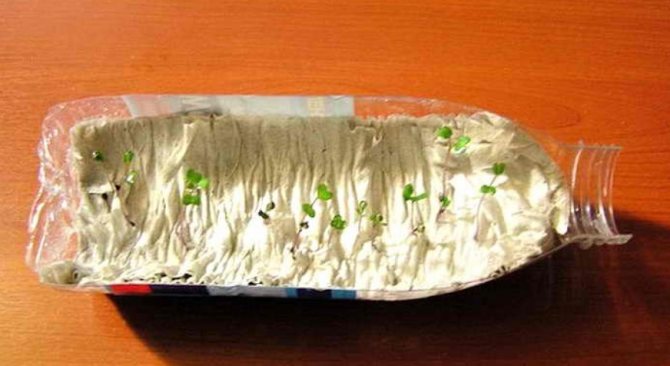

Seed selection tips
When choosing, you need to pay attention to the timing of the release of seeds. It is advisable to buy the material for sowing, the age of which does not exceed 2 years.
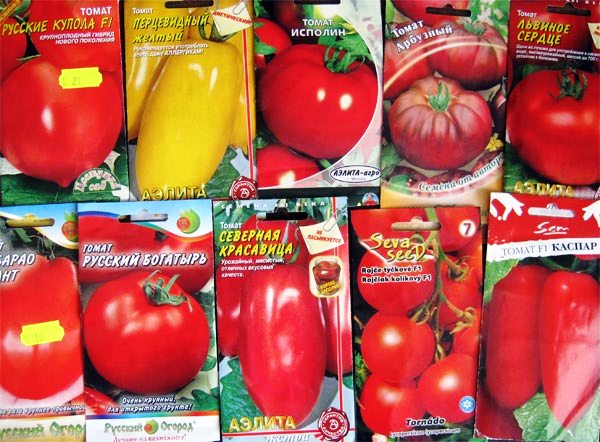

Tomato varieties
Before sowing, it is worth germinating the seeds for the best results. For germination, moisten a paper towel with water and put on a plate. After that, tomato seeds are laid out on the surface of the napkin, carefully covered with its free part, then all this is placed in a bag.
Germinating tomato seeds
The seeds should germinate within 3-4 days. When doing this, make sure that the plants are stored in a warm place and that the paper napkin is constantly damp. For planting, only germinated seed should be used - so the plants can grow stronger.
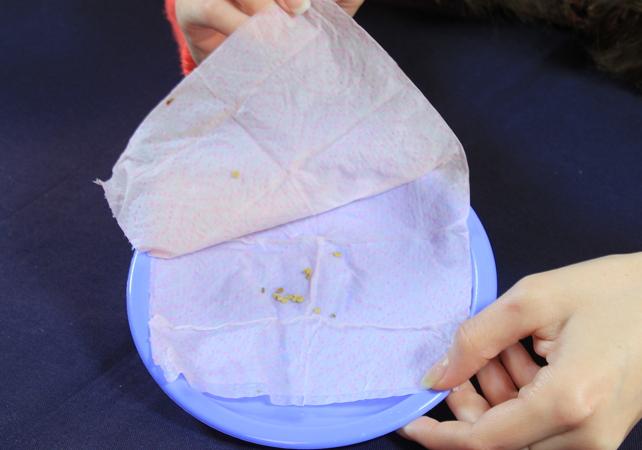

Germinated seeds
Few people know, but you can get high-quality tomato seeds at home. More on this below.
Tomato seed prices
tomato seeds
How to get tomato seeds
The germination of plants can be influenced by the size of the seeds, their maturity and density. An important factor is hereditary qualities. Therefore, the selection of the fruit for seed production is the most important step.
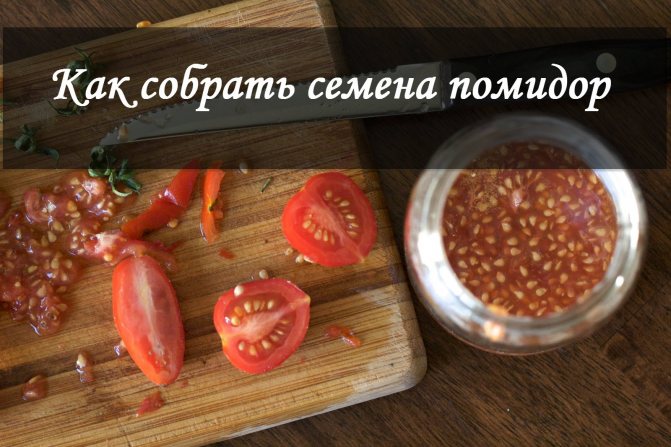

Collecting tomato seeds at home
Tools and materials:
- putty knife;
- a vessel for water;
- paper;
- gauze;
- water;
- large tomato.
Table. Step-by-step instructions for collecting tomato seeds.
| Steps, photo | Description of actions |
| Step 1 | Cut the large tomato in half. It should be a varietal fruit, not a hybrid one. |
| Step 2 | Gently remove the seeds from the tomato using a spatula. |
| Step 3 | After you have removed the seeds from the tomato, place them in a plastic or glass container. Close the fermentation vessel (approx. 2-3 days). The recommended storage temperature is 20 degrees. |
| Step 4 | Rinse the seeds after fermentation. During the process, any unusable or empty seeds should float to the surface. Get rid of them. |
| Step 5 | Using cheesecloth folded several times, strain the remaining seeds. Don't forget to rinse them. |
| Step 6 | Take the seeds and place them on the surface of the drying paper. After a while, the material will be ready for sowing. |
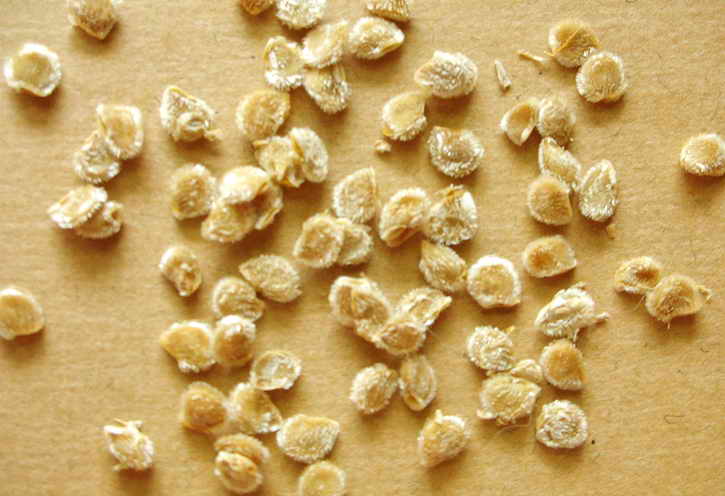

Tomato seeds
Home care
Watering
Pour 1 time per week over the edge of the box from the watering can, without adding, very slowly. Every day, the air around the seedlings is sprayed from a spray gun to maintain the necessary air humidity. In the heat, sprayed 2 times a day. It is best to avoid getting water on the seedlings.
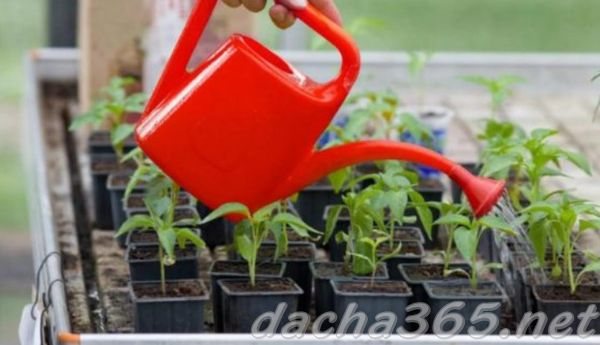

Lighting
Young tomatoes require intense lighting, up to 16 hours per day, and at the final stage of growing seedlings, 10 hours are sufficient. Therefore, the seedling boxes are placed on the sill of the southern window, and in the evening they turn on phytolamps over the seedlings. The boxes must be turned regularly so that the seedlings do not tilt in one direction.
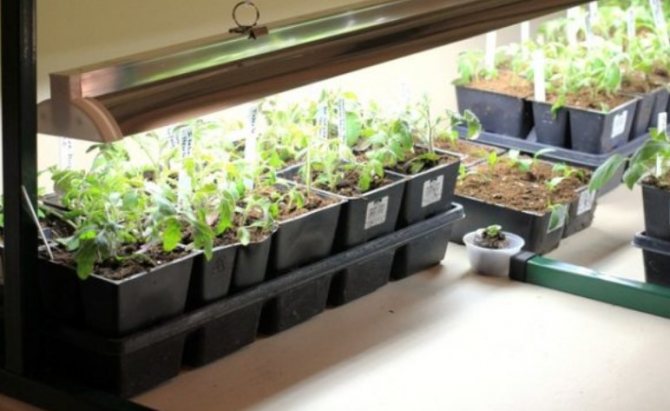

Picking
At first, the pacca grows heap, but later the seedlings begin to interfere with each other. To do this, they dive in 12-14 days after poceva. By this time, 1-2 real leaves should appear.
During the picking, the seedlings are buried 4 cm into the ground. They are planted in a common box in a 10x10 cm pattern.
Supplements
The scent of tomatoes grows for about 60 days. At this time, the plants quickly absorb all the nutrients from the soil. Therefore, it will be necessary to feed her a couple of times. Fertilizers are applied after irrigation at the root in the form of organic or complex mineral dressings.
For example, use the following feeding option:
1 tbsp. l. superphosphate is poured into 5 liters of water, 1 tbsp. l. potassium sulfate. Seedlings are first watered, and then top dressing is applied at the rate of 2 tbsp. l. by 1 root.
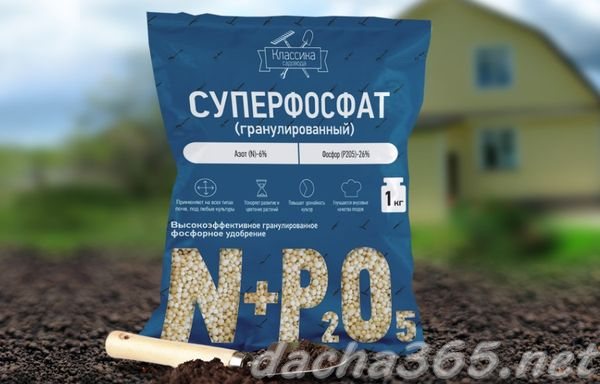

Chilling
Seedlings must be hardened before transplanting into an open ground to prepare them for more severe growing conditions. 10 days before the release, the seedlings are taken out onto the street or balcony. First for 30 minutes, gradually increasing the time to 12 hours a day.
By choosing the right timing for sowing tomato seeds for seedlings, it will be possible to grow healthy bushes that will give a good harvest. Of course, it is also important to prepare the soil and seeds, as well as to properly care for the seedlings. In addition, it is important to choose the right time for transplanting seedlings to a permanent place.
Watch the video! Sowing tomatoes for seedlings. Sowing terms and methods
Fertilizing vegetables
Feeding the sprouts should be done already 1-2 weeks after the dive. Further feeding is carried out after the preliminary introduction of fertilizers into the soil.
The initial feeding is carried out after planting the prepared seedlings on a plot of soil or in a greenhouse after a few days. For tomatoes, about 3-4 procedures are required for the entire season.
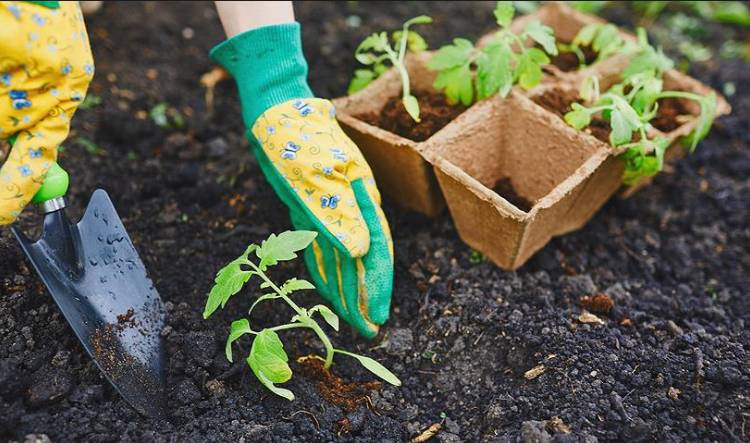

All necessary land works are carried out according to favorable days and preferably under good weather conditions. Precipitation and wind can negatively affect the entire fruit growing process.
It should be borne in mind that pinching tomatoes in the zodiac signs of Aries, Leo and Sagittarius is strictly prohibited! This is because during this period of time, young seedlings react quite negatively to any kind of impact on the upper leaves.
The full moon is an undesirable time for pruning and pinching tomatoes, as this can cause disease or complete destruction of the seedling. Damaged areas require a rather long period of time to recover; pathogenic microorganisms that provoke various diseases can penetrate into them.
Photo of planting tomatoes
Can cucumbers, peppers and tomatoes be planted in the same greenhouse?
This question is often asked by both experienced gardeners and just beginners. In theory, each crop should be planted separately from each other. But, you must admit that not always, and everyone has a lot of space on the personal plot and several greenhouses, so that it is possible to place everything separately.


If you ask and look at the opinion of experienced agronomists, you will see the following that nightshades, such as peppers, eggplant, get along with tomatoes quite easily, which means that their joint settlement is permissible.
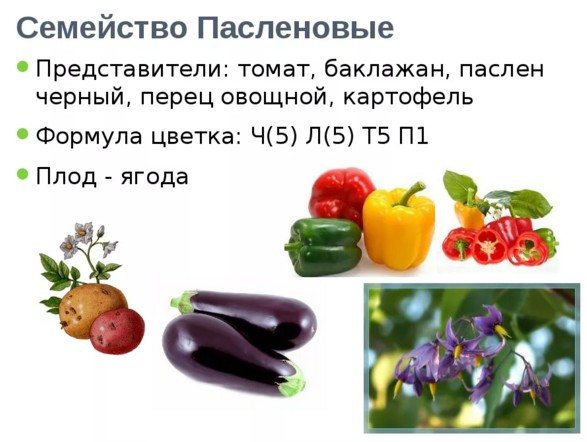

Let's take a look at some of the differences that will help you achieve maximum yield. Tomatoes should be watered a little less often than peppers. Peppers need more moisture, especially when they are in bloom and fruiting.
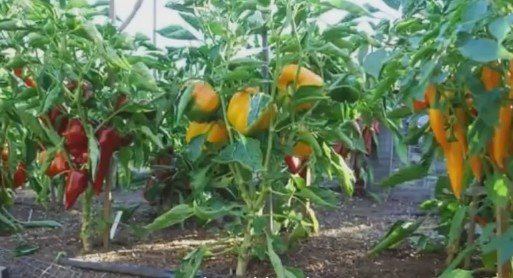

It is important to water these crops so that where the root system is located does not dry out, this is approximately at a depth of 20-30 cm. In order for moisture to evaporate less from the beds, the aisles should be mulched.
Keep in mind that tomatoes need slightly less heat than peppers - this is a big difference. Therefore, you will have to save the pepper from very hot days during the flowering period.
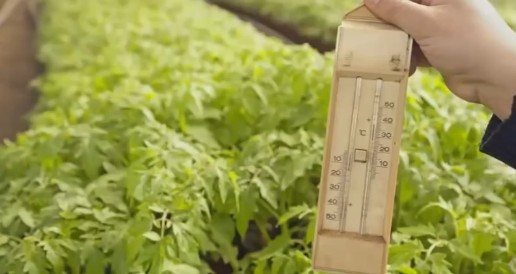

The microclimate for tomatoes and peppers is the same. This makes me happy). This means that they have the same requirements for air humidity. But when the humidity rises, the tomatoes may die. The soil should be loose and moist in both cases.
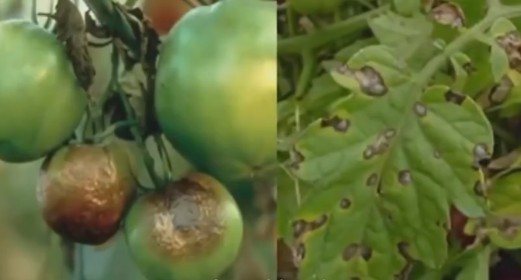

I form the beds, you need to plant the tomatoes in a checkerboard pattern, this is option number one. And a little later, plant pepper between them. With this method of planting, when you remove the lower stepsons to the first brush, the tomatoes of this place and the lighting will be enough for the pepper.
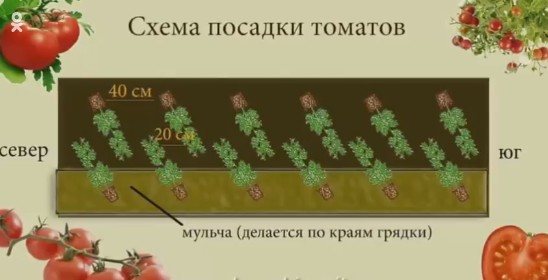

Second option. Plant the peppers along the rows of tomatoes. Then he will not be attacked by aphids.
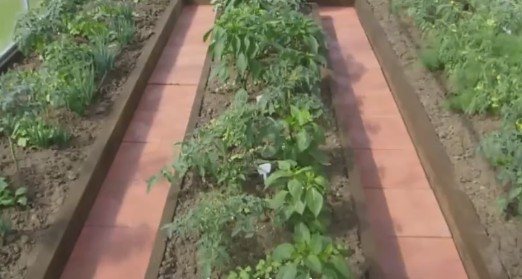

The third option. Place tall varieties of tomatoes on one side, and on the other, arrange a small greenhouse for peppers. After all, he does not like inconsistent temperatures and will not withstand sudden changes.
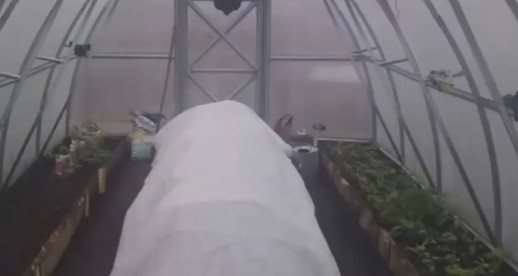

Fourth option. It will allow you to combine three vegetable crops, these are tomatoes, cucumbers and bell peppers. But, the greenhouse must be large. Divide the inner space into three zones: place the tomatoes on the middle one, because it is in this place that the best ventilation is.
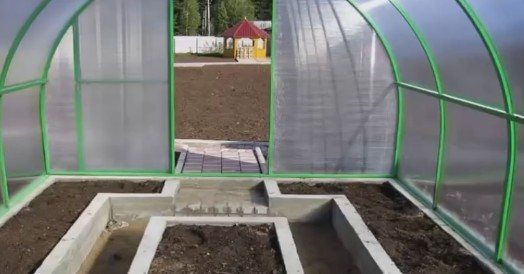

Plant cucumbers on the south side, because they need frequent watering. And do not forget that you need to do this in the morning, and during the day, carry out ventilation so that the moist air does not stagnate.
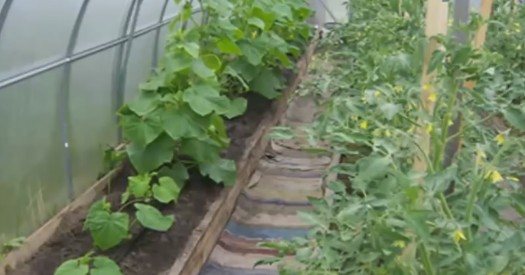

Well, and accordingly there is a place left on the north side, stick the peppers there. They are not afraid of aphids, and the neighborhood with tomatoes will be a good condition for fruiting.
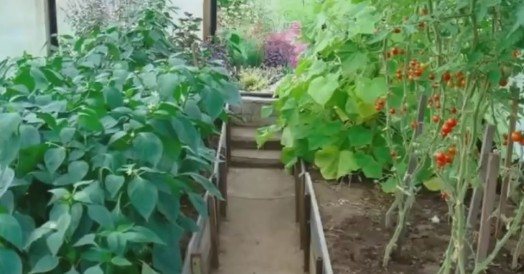

That's all for me. This is a note for today, I hope you have found the answers to your questions. Write your feedback and comments. Come visit more often, there will be many more interesting things. Bookmark the site and join the group in contact. See you soon everyone!
Best regards, Ekaterina Mantsurova
What seeds to choose
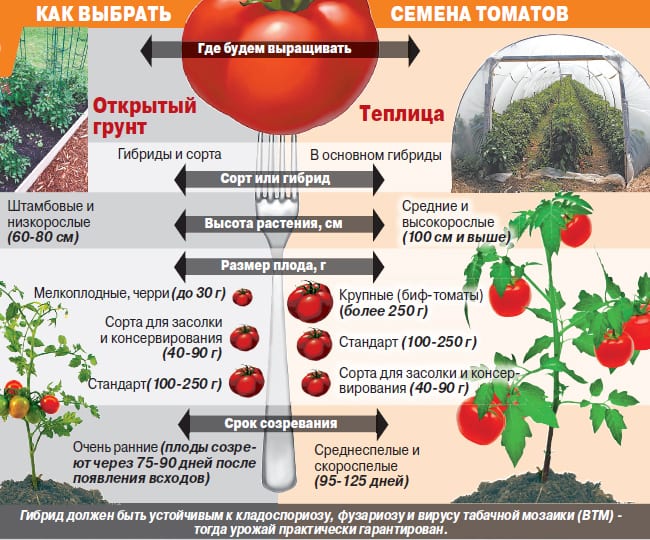

Selection of varieties of tomatoes for the greenhouse and open field
Planting tomatoes for seedlings begins with the selection of seeds. It is best to take varieties that will withstand the weather conditions in your region. Choose tomatoes with the flavor you want. Other selection criteria:
- the height of the bushes - tall plants require tying;
- growing method - for a greenhouse or open ground;
- the size, density and juiciness of ripe tomatoes - will be consumed fresh or used for canning;
- hybrids or self-collected seeds - hybrid plants give a bountiful harvest, but their varietal characteristics are not preserved in the seeds;
- shelf life - plants grown from three-year-old seeds form more fruits when a sufficient amount of moisture and organic matter is applied.
First shoots, what to do
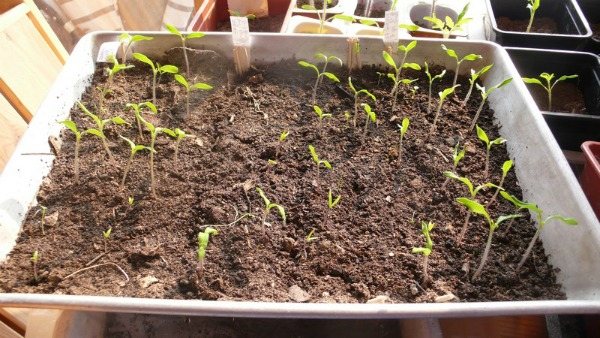

The first shoots can be expected to appear in 4-6 days. In general, this indicator depends on the air temperature in the room. The colder it is in the room, the longer it will take for the seedlings to appear.
For example, at a temperature of +18 ° C, sprouts will appear no earlier than after 2 weeks. As soon as you notice the loops of the shoots, the seedlings should be immediately placed in the brightest place and the temperature should be reduced by 6-8 ° C.
You should not put the container close to the window pane, it is too cold there. At extremely low temperatures, the seedlings will not be able to absorb nutrients normally.
After a week, the temperature should be raised to room temperature (22-24 ° C). When the cotyledon leaves appear, the seedlings begin to feed on the roots, so it is advisable to feed the seedlings without waiting for the appearance of real leaves. For feeding, use a weak solution of any mineral fertilizers.
From this moment, artificial lighting begins to be used, since it is now that leaves and flower buds are being laid. With a lack of lighting at this stage, instead of brushes, tomatoes will begin to lay leaves, as a result, the beginning of fruiting will be delayed.
Fluorescent lamps should be turned on daily, placing them at a distance of 7-10 cm from the plants. As the seedlings grow, the lamp is moved aside so that the light source remains at the same distance.
Picking
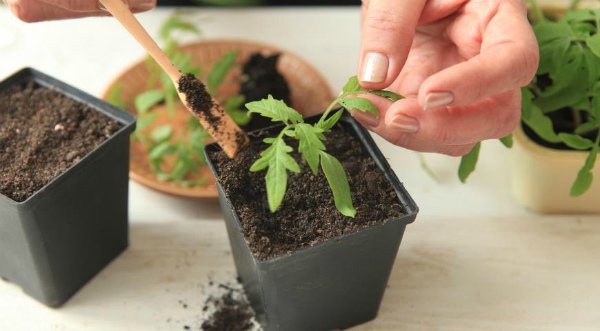

Tomato roots grow quite quickly. A pick will be needed when the root system fills the entire space of the soil. If you are late with the procedure, the seedlings will show signs of starvation, they will become frail.
Experts believe that it is best to dive 7-10 days after germination, in the phase of formation of 2 true leaves.
The picking procedure requires accuracy. If the roots are damaged, the subsequent adaptation of the plants will take longer.
- For seedlings, a container is prepared in advance, usually these are plastic glasses with a volume of 0.5 liters.
- The soil should be moistened a few hours before the procedure to make it easier to remove the plants along with the clod of earth.
- Each seedling is pried from below with a special spatula or a tablespoon and planted in a separate container.
- When planting, plants should be buried to the cotyledon leaves, and the soil should be slightly tamped.
- After the pick, the cups are placed in a shaded place for 1-2 days.
- When the seedlings get a little stronger, they are again given maximum illumination.
Without picking
Some summer residents immediately plant seeds in a larger container to do without picking. Choosing this planting option, they argue that they will not need to spend extra time fiddling with seedlings, the plants will not experience stress, the root and stem will remain intact.
The process of planting in individual pots differs in that 2-3 seeds must be put into the hole at once in case some of them do not sprout. In the future, one, the strongest, plant is left in the container, and the stunted ones are carefully cut with scissors.
A simple way to grow tomatoes without picking - video
Tying seedlings
Plants grow actively with proper care. It is necessary to tie them up, since on the ground the stems and fruits are often rotted, they begin to hurt. Tied plants are easier to weed, huddle, feed and water. Air circulation takes place, they warm up well in the sun.
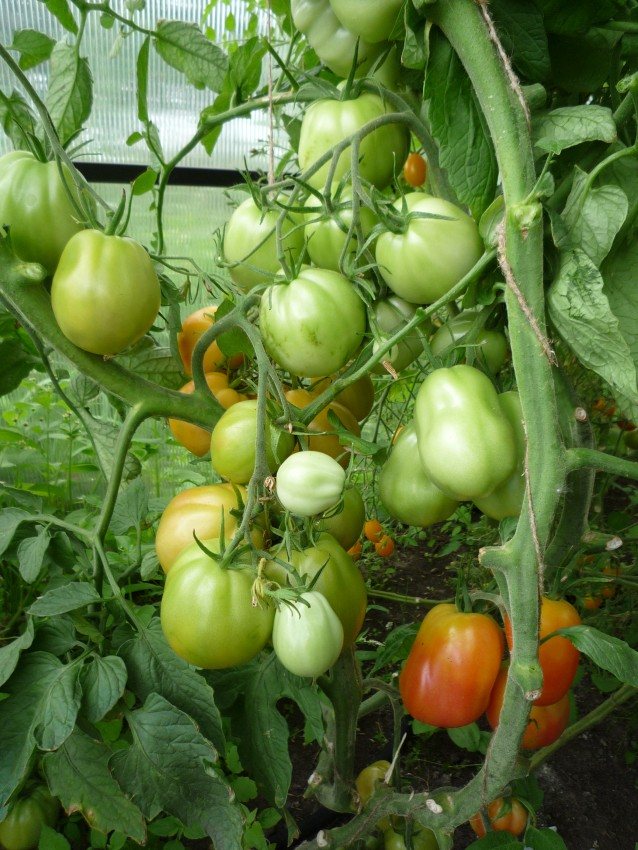

We use twine and old tights as the material for the garter. For the supports, we take metal rods, small-diameter pipes, wooden pegs. We make the support in height longer than the plant. Tie it up carefully.
What happens if you plant too early
The main problem with early sowing of tomatoes is that they stretch too much. This leads to such consequences as:
- Weak seedlings;
- Breakage of shoots during transportation and disembarkation;
- Long adaptation to a permanent place after disembarkation;
- Late ripening of the crop.
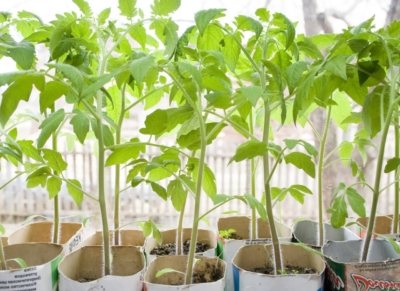

If you miscalculated the timing of sowing tomatoes, they will become thin and weak.
In the case when the seedlings strongly outgrow long before planting, you can cut off the crown and put it in water. When it gives roots, plant it in the ground. This will give you two seedlings.
If the seedlings have outgrown before planting, then you need to put the plant horizontally in a small groove, leaving only part of the shoot above the ground.
These methods will help solve the problem, but you will get the harvest later.
When to sow tomatoes according to the lunar calendar 2019?
In the middle lane, the cultivation of tomatoes by sowing seeds in the ground is practiced only as an experiment. Whatever one may say, but from the emergence of seedlings to the ripening of fruits, even super ultra early varieties should take at least 80 days. Tomatoes are a rather thermophilic culture. Even if you sow seeds in a greenhouse in early May, you will not be able to eat tomatoes until the end of June.
An increasing number of gardeners, when planting, picking and other work, are guided by the lunar calendar.
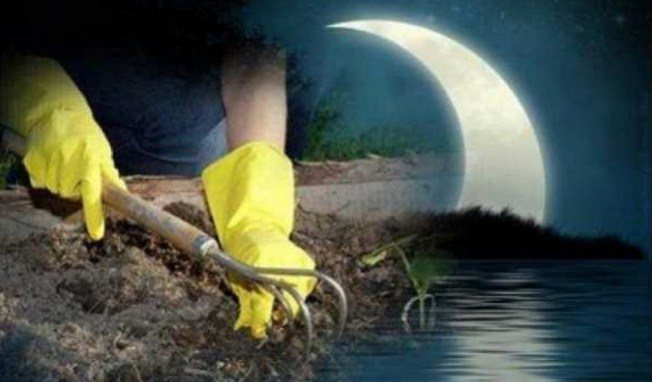

Auspicious days for planting tomato seeds for seedlings
- In February, the most favorable days, according to the lunar calendar, will be: the period from 6th to 10th, 16th and 17th. A good period from the 24th to the 27th.
- In March, the period from the 7th to the 10th, 15th and 16th. Good period: 5th day and time from 22nd to 24th.
- In April, the most favorable days are: the 6th and the period from the 11th to the 13th. Good days: periods from the 2nd to the 4th, from the 20th to the 23rd, and the 29th and 30th.
Bad days
Days on which it is undesirable and unacceptable to carry out planting work:
- 4th, 5th, 18th and 19th of February;
- The period from March 3rd to 6th, as well as March 17th, 18th, 21st, 30th and 31st;
- 1st, 5th, 14th, 15th, 19th April and the period from 26th to 28th April.
How does the moon affect tomato seedlings
Tomatoes, like all plants, are highly influenced by the lunar cycles.
- During the new moon, plants are usually weakened and require special care. Roots damaged these days will recover for a long time. Therefore, it is not worth planting or picking tomatoes during this period.
- With the growing moon, plant sap begins to move upward. These days they are engaged in planting, picking, transplanting vegetables and fruits that yield crops above the surface of the earth. That is, this time will be favorable for sowing tomatoes. It is worth remembering that when pre-processing seeds (soaking, germinating), the day of sowing seeds will not be placed in the ground, but the day when the work has begun.
- Full moon. Plants are full of strength and energy. Their shoots are richly nourished with juice. The most favorable period for harvesting. Not a drop of taste will be lost. But you should not pinch the tomatoes. In principle, this phase of the moon is not the most favorable for sowing seeds either.
- Waning moon. This phase is considered the best for planting root crops.
When compiling lunar calendars, experts, in addition to the phases of the moon, also take into account its passage along the signs of the zodiac. So, according to astrologers, for sowing tomatoes for seedlings, the most favorable time is when the satellite will be in the constellation Aries, Cancer or Scorpio. You should not carry out work with the ground, including landing, when the night beauty passes through the constellations of Leo and Aquarius. It is not known what is true here, and what is fantasy. And if our distant ancestors took into account the lunar phase when doing earthwork, then astrology is a newfangled trick, and she is about thirty years old in this regard. Maybe that's why bright editions appear on the shelves with completely different, often conflicting recommendations.
On the other hand, gardeners are adults and have the right to independently decide which advice to listen to.
Signs of healthy and unhealthy seedlings
Tomato seedlings should have a not too thick, but elastic stem with 6-7 well-developed leaves of the color characteristic of this variety. It is optimal for the bushes to form 10-15 leaves. Seedlings can be subject to some diseases.
Signs of improper care, diseases of tomato seedlings:
- Why do seedlings turn yellow? It is bad if the plants are light in color. Light green leaves indicate abnormal irrigation, too low nitrogen supply.
- Often, amateur vegetable growers cannot understand why the lower leaves of seedlings dry up. Over-watering is a common cause. The photo below shows a tomato seedling that has undergone excessive watering - the lower leaves of the tomato turn yellow and dry out. Perhaps the reason lies in the lack of drainage - at the top the soil is dry, and below it is flooded with water.
- If the leaves are too dark, this indicates drying out of the soil, excess fertilization.
- The root system should cover the entire pot evenly.
- Healthy seedlings should not have damage to the bush, symptoms of disease on the stems, leaves.
For pest control, especially when growing seedlings in greenhouses and greenhouses, hang sticky yellow insect traps.
Various symptoms (wilted leaves, purple leaves, seedlings fall, wither, black leg in a tomato) indicate the occurrence of various diseases of tomato seedlings, which are described in a separate article.
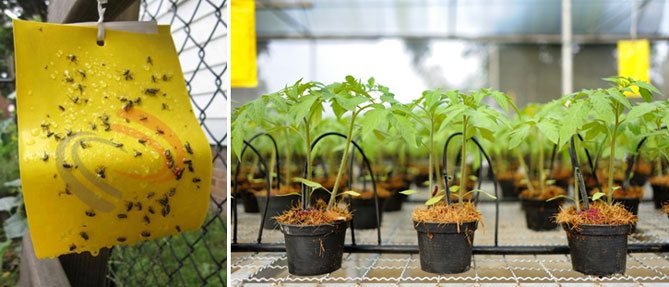

What happens if it's too late
If the tomatoes are sown too late, then the plant will not have time to get strong enough before planting in the ground. Consequences of late sowing:
- Long adaptation of the seedling after planting;
- The tomato may die;
- Susceptibility to diseases and parasites;
- Late harvest or lack thereof.
Expert opinion
Ulanin Konstantin Grigorievich
Agronomist, work experience in the specialty - 12 years
A tomato that has not had time to form may not bring you the long-awaited harvest. Since a long adaptation and late development often lead to the fact that the plant does not have time to go through the necessary growth stages before the end of the summer season and a drop in temperatures. Or the harvest will still be, but very meager.
Greenhouse landing
Many people grow tomatoes in greenhouses. How to properly plant seedlings in a greenhouse?
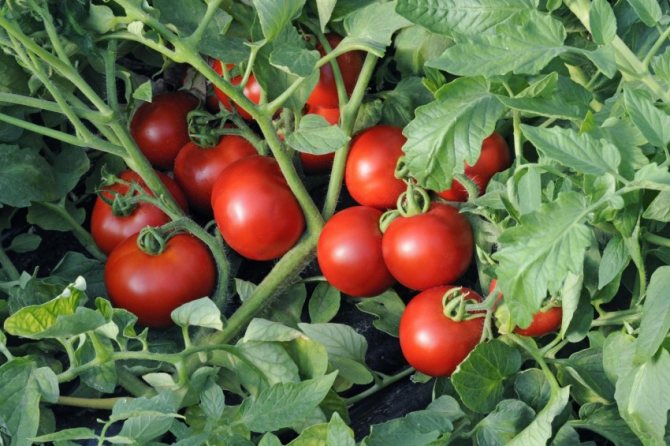

Warm up the earth in advance. If the greenhouse is heated, this problem does not arise. In an unheated greenhouse, close the vents, check for cracks and broken glass. We fix the problems. Additionally, we cover it with a film if the greenhouse is made of polyethylene. These actions will significantly increase the air temperature in it.
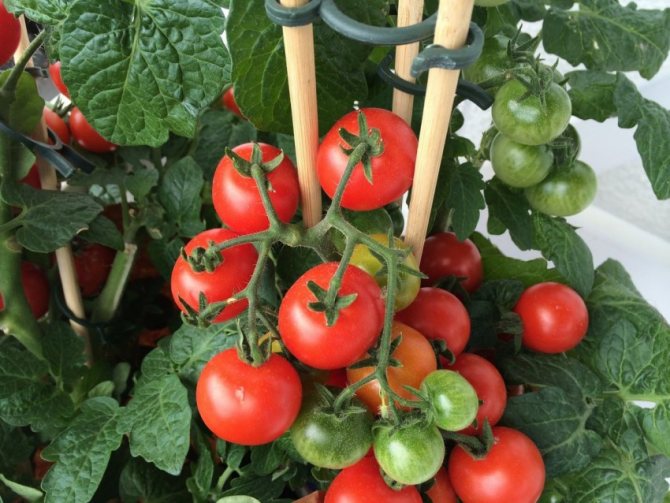

To make the ground warm faster, you can put black polyethylene on it. You must first carefully dig up and loosen the ground. Close the doors tightly. If the soil warms up to the desired temperature of +15 degrees, we plant the seedlings.
We make beds of fertile soil in advance, 30-40 cm high and 60-80 cm wide. We plant seedlings in one row. Before planting in a greenhouse, seedlings should be sprayed with a prepared boric acid solution (1 gram per liter of water) for a week. This increases the yield while preserving the buds in the future.
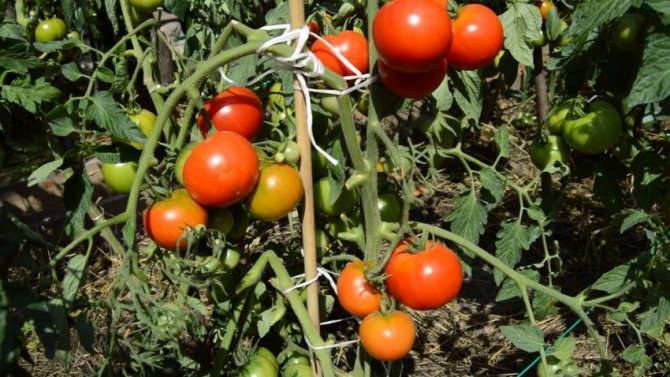

We check the seedlings a day before planting. We cut off the yellow and dry leaves. The ends of the cliffs should dry out. If the plant is overgrown, remove the lower branches. It needs to be planted deeper.
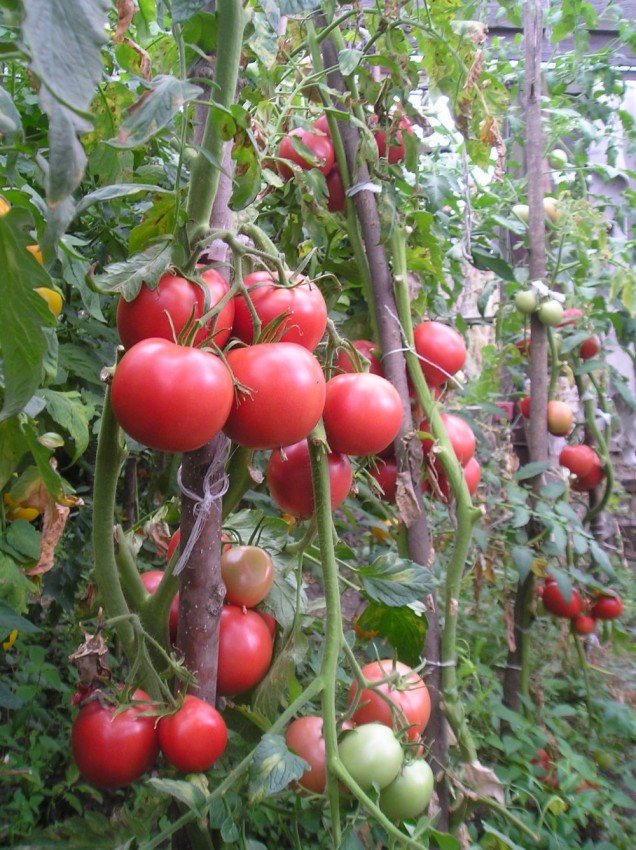

For half an hour, the seedlings are watered abundantly. We plant plants in the holes to a depth of 25 cm at a slight angle. The soil is slightly compacted. We make watering.
It is not recommended to apply manure as fertilizer, excess nitrogen can lead to rapid growth of tops. We apply fertilizers according to the instructions.
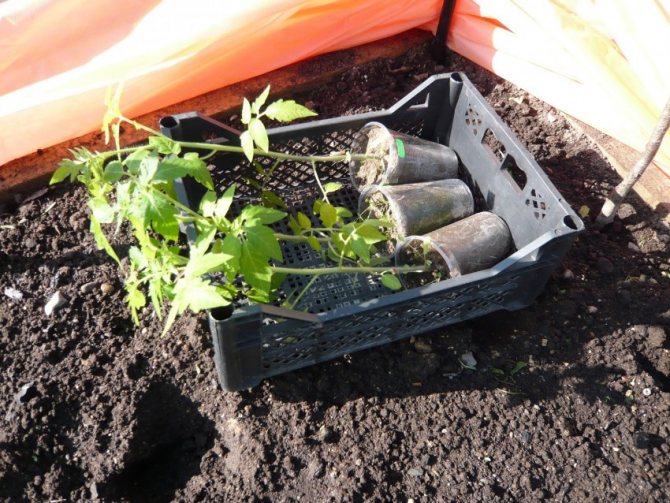

We maintain 60 cm between the holes. Planting is carried out after 17 hours or when the sun is not active. We place ready-made pegs, prepared in advance, next to the seedling. If you install them later, you can damage the root system.
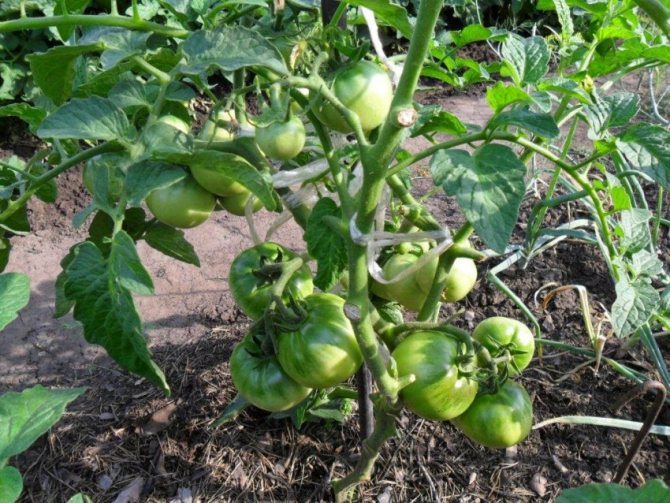

When to plant tomato seedlings in open ground: preparing seedlings for planting
At least 5-6 days before planting (if the seedlings grew in an apartment), it is necessary to harden it (especially early tomatoes).
Before planting tomato seedlings, it is useful to treat with any drug that will reduce the stress effect of changing environmental conditions and help the plants to take root ("Zircon", "Epin", "HB-101" and others).
We grow tomatoes without seedlings - varieties, advantages and disadvantages of the method (read more)
It is important to carry out processing with these agents in full accordance with the instructions for the preparation.
Suitable green manure plants
Siderata loosen the soil, saturate it with useful substances. Suitable options for tomatoes:
- mustard leaf (repels many pests, prevents weed growth);
- phacelia (neutralizes the increased acidity of the soil, attracts beneficial insects);
- oil radish (deeply loosens the soil);
- lupine (saturates the substrate with nitrogen, "pulls" nutrients closer to the soil surface);
- vetch (saturates with nitrogen, green mass is used as a natural fertilizer).
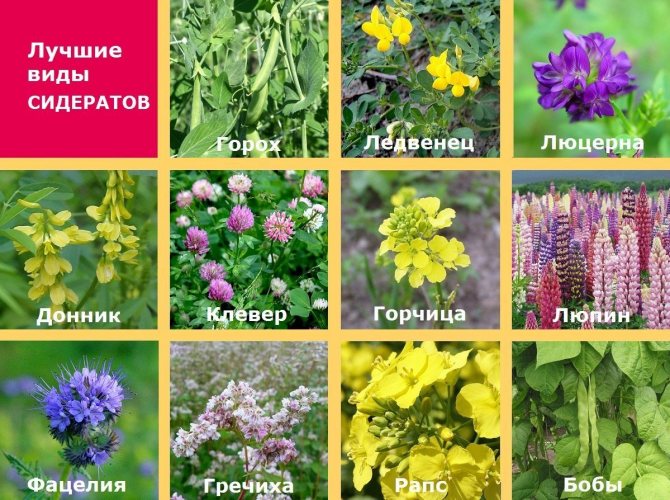

Siderata for tomatoes can be planted in spring (to loosen the soil), in autumn (using greens as a natural fertilizer) and during the summer (to protect against weeds, pests and attract beneficial insects)
Care after seating
The basis for the success of growing seedlings is a good substrate and constant control of soil moisture. As long as you don't let it get too wet, there should be no problems with mold or disease.
Plants are watered carefully - water is poured under the plant, without spraying on the leaves. It is important not to over-water - the tomatoes don't like it.
Plants are still kept in a warm, bright place, a suitable temperature for seedlings is 16-20 ° C - a not too warm windowsill will do.
Be careful not to burn the plants on the south window.
Top dressing of tomato seedlings
You need to know how to feed the seedlings of homemade tomatoes so that the stems are plump. For this purpose, it is better to use liquid multicomponent fertilizers. Feeding seedlings before picking begins when the plants have 2 true leaves. Top dressing is repeated 2-3 times during the growing of young seedlings.
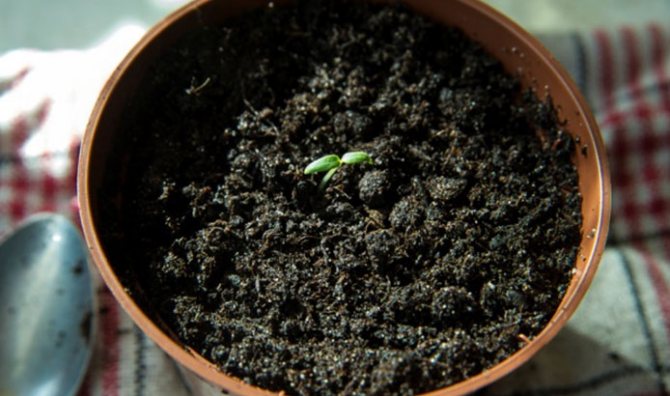

To grow seedlings after picking, the soil should be fertilized with compost at a dose of approximately 3-4 kg / m², thoroughly mixed with the soil.
An interesting method is fertilizing and feeding seedlings of peppers and tomatoes with folk remedies. Home preventive treatments are based on readily available ingredients:
- milk;
- nettle;
- bactericidal garlic.
These feeding methods were invented by our ancestors, you should not ignore their valuable experience, you can experiment with them on some experimental pots.
- Milk: It is recommended to start pollination with milk water solution as early as possible, for example, after a pick. Prepare a milk-water solution in a ratio of 1: 4 (for 1 part (cup) of milk, pour 4 parts (cups) of water.) Another way to grow healthy bushes is to place pieces of bread soaked in milk directly under the roots.
- Nettle: Nettle compost is diluted with water in a ratio of 1:10, used for spraying.
- Garlic: A medium-sized head of garlic is crushed with a garlic press and mixed with 1 liter of water. The mixture is filtered and sprayed through a sprayer.
Judging by the reviews about the features of obtaining seedlings, some gardeners, wanting to avoid later spraying with copper sulfate and copper preparations, screw a piece of copper wire near the stem. Can this method be considered useful and proven? If you have used this method, please share your experience by adding a comment.
Hardening of seedlings
Regardless of the method of growing seedlings, it is necessary to temper the plants before planting in a permanent place.This should prepare the plants for the worst conditions that may prevail after planting. Plants are made easier to carry stress. Seasoned tomatoes are accepted faster.
A few weeks later - in late April - early May, young plants begin to accustom themselves to external conditions. When the hottest period of the day comes (12-14 hours), the bushes are taken outside, leaving them there for some time.
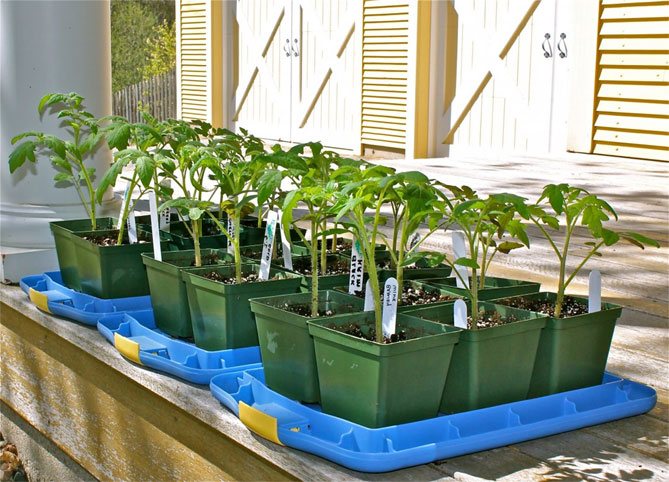

Hardening starts from 1 hour, gradually increasing the period of stay on the street. At night, the plants must be returned home. Hardening of seedlings should last 10-15 days.
During the hardening period, special care is needed:
- watering is limited;
- the air temperature drops to 10 ° C (the most optimal) - the pots are taken out of the heated room to a cooler place and more often the room is ventilated.
The hardened seedlings are ready to be planted outdoors.

